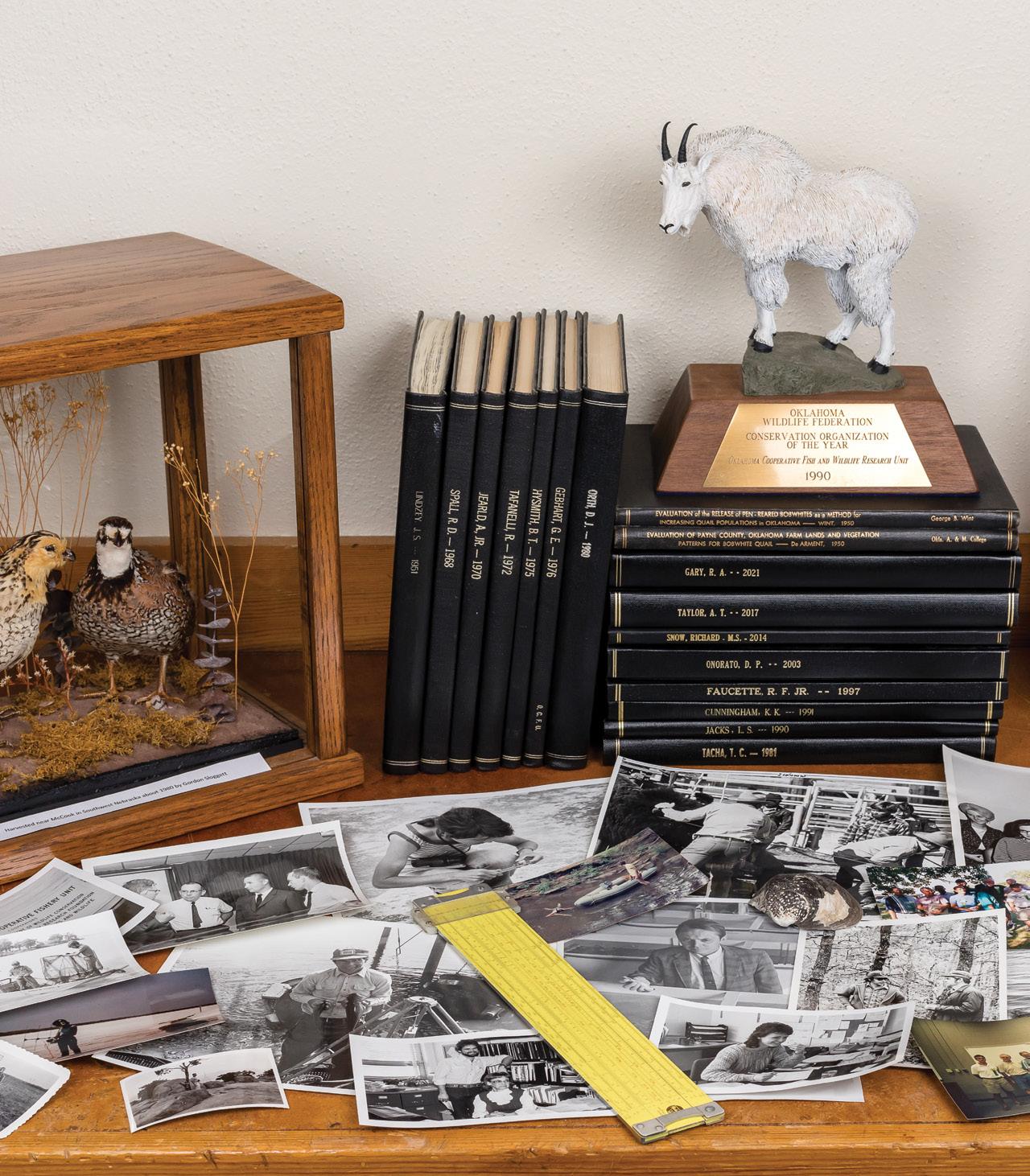

TRIENNIAL REPORT 2020|22
OKLAHOMA COOPERATIVE
Celebrating Our 8th Decade IN COOPERATION WITH
FISH AND WILDLIFE RESEARCH UNIT
It is our great pleasure to circulate this Report of the Oklahoma Cooperative Fish and Wildlife Research Unit , which highlights our 75 years of service providing graduate level education to help train the next generation of natural resource professionals. The OK Unit began in 1948 when Walter P. Taylor arrived at the campus of Oklahoma A&M College (now Oklahoma State University) in Stillwater that February.
The Oklahoma Unit of the U.S. Geological Survey’s Cooperative Research Units Program has been an integral part of graduate-level research and post-graduate training in natural resources, particularly fisheries and wildlife conservation, at Oklahoma State University since 1948.
With direction from our Coordinating Committee, research is conducted on a wide variety of natural resource conservation topics in cooperation with federal and state agencies, the University, the Oklahoma Department of Wildlife Conservation, the U.S. Fish and Wildlife Service, the Wildlife Management Institute, and various private entities. Most of our research projects are problem oriented and designed to provide cooperators with useful information on time-sensitive natural resource issues.
From its establishment in 1948 to 2006, the Unit was affiliated with OSU’s Department of Zoology (now Integrative Biology) in the College of Arts and Sciences. In 2006, the Unit’s affiliation moved to the newly created Department of Natural Resource Ecology and Management in the Division of Agricultural Sciences and Natural Resources.
Research through the Oklahoma Unit is conducted mainly by M.S. and Ph.D. candidates. Over 420 theses and dissertations have resulted from their persistence and scholarship. Students have conducted research on fisheries management in reservoirs, ponds, and rivers; stream ecology; species of special
concern including the Arkansas river shiner and Ozark big-eared bat; toxicology; and management of bobwhite quail, black bears, and smallmouth bass. While many of our research projects occur in Oklahoma, other projects conducted by our scientists and students occurred in Georgia, Missouri, New Mexico, Nebraska, and Texas. As we celebrate our 75 years, future projects will continue to emphasize applied research on the natural resources of Oklahoma and the nation.
The Oklahoma Unit and its Cooperators would be pleased to share additional information on any project summarized herein. You are welcome to contact any of the investigators listed by project through the Unit Office.
Additional information about our cooperators can be found at www1.usgs.gov/coopunits/, www.okstate.edu , www.wildlifedepartment. com , www.wildlifemanagementinstitute. org , and www.fws.gov
James M. Long Unit Leader/Fisheries
Lindsey A. Bruckerhoff
Assistant Unit Leader/Fisheries
Robert C. Lonsinger
Assistant Unit Leader/Wildlife
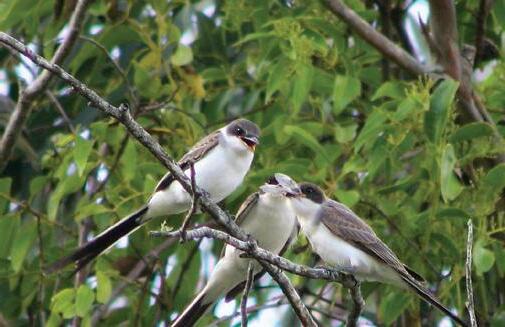
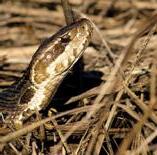
Coordinating Committee (current voting members)
Thomas G. Coon
Vice President of the Division of Agricultural Sciences and Natural Resources, Oklahoma State University
J.D. Strong
Director, Oklahoma Department of Wildlife Conservation
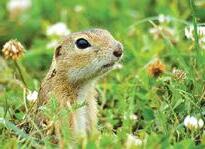

Jonathan Mawdsley
Chief, Cooperative Research Units, U.S. Geological Survey
Steve A. Williams
President, Wildlife Management Institute
COVER
The 75th anniversary of the Oklahoma Unit is rich with projects on a wide variety of fish and wildlife. [Tanner Scholten Photography]
Triennial Report designed by Oklahoma State University Brand Management.
welcome
OPPORTUNITIES FOR GRADUATE STUDY
NATURAL RESOURCE ECOLOGY AND MANAGEMENT AND BEYOND!
Cooperators and Research Personnel
Cooperating faculty from the University, resource professionals from many agencies and affiliated universities, postdoctoral researchers, graduate students, research specialists and technicians, and volunteers are the lifeblood of Unit operations and opportunity.
75th Anniversary
2023 marks the OK Unit’s 75th anniversary with projects conducted by over 420 students being represented.
Biennial Report 2020
2022
The UNIT TRIENNIAL REPORT is a publication of the Oklahoma Cooperative Fish and Wildlife Research Unit to disseminate information about Unit research and scholarly activities at Oklahoma State University. It is intended to encourage communications among interested parties. Please contact the Unit for further information and dialog.
Oklahoma Cooperative Fish and Wildlife Research Unit


007 Agriculture Hall
Aquatic Resources
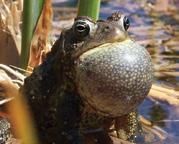
In this current report, we present summaries of projects on development of analysis systems, hydroacoustics and side-scan sonar, as well as community structure of aquatic macroinvertebrates such as mussels and insects.

Terrestrial Resources


Research on bear populations across the country are highlighted during this period as well assessments of declining game birds, such as quail and wild turkeys.

Scholarship
During this period, the spirit of scientific contribution and scholarship of Unit participants has resulted in 17 student/ faculty awards, 15 theses/dissertations (423 since the first in 1950), 49 peerreviewed and technical publications, and 80 presentations at professional state, regional, national, and international meetings.
Oklahoma State University
Stillwater, OK 74078-3051
P 405-744-6342
F 405-744-5006
1 2 32 20 3 26
© 2023 OKLAHOMA STATE UNIVERSITY
Cooperators & Personnel CONTENTS
Triennial Report 2020 2022
Unit Staff
Dr. James M. Long
Unit Leader and Adjunct Professor.
Ph.D., Oklahoma State University, 2000. Conservation ecology and fisheries science. longjm@okstate.edu; jmlong@usgs.gov
Dr. Lindsey A. Bruckerhoff
Assistant Unit Leader and Adjunct Assistant Professor.
Ph.D., Kansas State University, 2020. Stream and community ecology. Lindsey.bruckerhoff@okstate. edu; lbruckerhoff@usgs.gov
Dr. Robert C. Lonsinger
Assistant Unit Leader and Adjunct Assistant Professor.
Ph.D., University of Idaho, 2015. Wildlife ecology and conservation genetics Robert.lonsinger@okstate. edu; rlonsinger@usgs.gov
Cheryl McKnight
Senior Accounting Specialist. cheryl.mcknight@okstate.edu
Marcie Lemons
Senior Administrative Support Assistant marcie.lemons@okstate.edu
Renee Flasch
Administrative Support Specialist II renee.flasch@okstate.edu
Cooperators
OKLAHOMA STATE UNIVERSITY
Administration: Thomas Coon (Vice President), Scott Senseman (Associate Vice President); Agricultural Economics: Bhawna Thapa; Entomology and Plant Pathology: Bruce Noden, Wyatt Hoback; Natural Resource Ecology and Management: Jim Ansley (Head), Colter Chitwood, Craig Davis, Courtney Duchardt, Dwayne Elmore, Sue Fairbanks, Sam Fuhlendorf, Laura Goodman, Karen Hickman, Omkar Joshi, Scott Loss, Tim O’Connell, Dan Shoup, Rod Will; Integrative Biology: Jason Belden (Head), Kristen Baum, Elisa Cabrera-Guzmán, Andy Dzialowski, Tony Echelle, Stanley Fox, Ron Van Den Bussche, Shawn Wilder.
OKLAHOMA DEPARTMENT OF WILDLIFE CONSERVATION
Administration: J.D. Strong (Director), Wade Free, Andrea Crews; Fisheries: Jory Bartnicki, David Bogner, Brandon Brown, Jim Burroughs, Ken Cunningham (Chief), Austin Griffin, Ashley Nealis, Tony Rodger, Jason Schooley, Richard Snow (Assistant Chief), Trevor Starks, Jon West, Doug Zentner; Wildlife: Curt Allen, Bruce Burton, Steve Conrady, Alex Cooper, Brett Cooper, Scott Cox, Jerrod Davis, Bill Dinkines (Chief), Craig Endicott, Colby Farquhar, Joe Hemphill, Melinda Hickman, Russ Horton (Assistant Chief),
Mark Howery, Ron Justice, Kurt Kuklinski, Mike O’Meilia, Scott Parry, JD Ridge, Mike Sams, Doug Schoeling, Rod Smith, Curtis Tackett, Rex Umber, Derek Wiley.
U.S. GEOLOGICAL SURVEY
Columbia Environmental Research Center: Patrick Braaten, Colt Holley; Cooperative Research Units: Dawn Childs, Shana
Coulby, Don Dennerline, Barry Grand, Elise Irwin, Amanda Maslowski, Sumina
Pokharel, Missy Thode; South Central Climate Science Center: Mike Langston.
WILDLIFE MANAGEMENT INSTITUTE
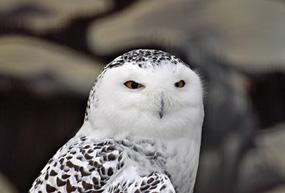
Bill Moritz
U.S. FISH AND WILDLIFE SERVICE

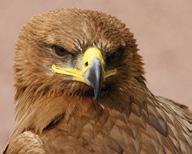
Region 2: James Broska (Assistant Regional Director), Beth Ross, David (Randy)
Stewart; Tulsa Ecological Services: Ken Collins (Field Supervisor), Daniel Fenner, David Martinez, Kevin Stubbs; Oklahoma
Fisheries Resource Office: Brian Fillmore; Tishomingo National Fish Hatchery: Ralph Simmons; Wichita Mountains Wildlife
Refuge: Christine Fallon, Dan McDonald

U.S. DEPARTMENT OF DEFENSE
Kansas City District Office: Joseph Bonneau, Anthony Civiello, Todd
Gemeinhardt, Nate Gosch, Marcus Miller.
U.S. DEPARTMENT OF AGRICULTURE
US Forest Service: Robert Bastarache
OSAGE NATION
Frank Freeman, Jann Hayman
2
Cooperators & Personnel
Oklahoma Wildlife Research Unit — the beginnings.

The OK Unit began in 1948 when Walter P. Taylor arrived on the campus of Oklahoma A&M College (now Oklahoma State University) in Stillwater that February. Dr. Taylor was the Unit Leader of the Texas Unit and for reasons unclear, needed to relocate the Unit elsewhere. In a memo from 1971, a secondhand story from Dr. Roy Jones, head of the Zoology Department at OSU at the time, mentioned, “the Texas Unit and Dr. Taylor would have to terminate in the late 1940’s.” In response, Congressman Tom Steed helped arrange for the Unit to be established in Oklahoma. At that time, 14 Cooperative Research Units were active throughout the country with an overarching mission to train the next generation of wildlife biologists, primarily through graduate-level research. That mission remains today with the Oklahoma Unit helping over 420 graduates obtain their MS and PhD degrees over its 75 years.





3
1948 19 48
Unit History:
Unit History: 1950s

Oklahoma Wildlife Research Unit — the 50s.
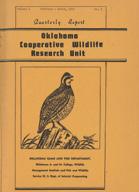


In 1950, the first four students graduated from OK A&M through the newly minted Wildlife Research Unit. It’s particularly interesting to know that one of these, George Wint, would go on to become Director of the Oklahoma Department of Wildlife Conservation in the 1970s, which is particularly fitting with the CRU goal of training the next generation of natural resource professionals. Among the main topics being addressed through research in this period was ecology and management of bobwhite quail—still of keen interest today, benefitting many graduate students.





4
19 50s
Oklahoma Wildlife and Fisheries Research Unit — the 60s.








Significantly, a Fisheries Research Unit was added in 1965. Bradford Brown oversaw opening of the Unit as its first acting Unit Leader, and he hired the first African American in a noncustodial role at OSU, Helen Murray. Helen would eventually become a legend at the OK Coop Unit, serving 40 years in her tenure. The first permanent Unit Leader of the fisheries unit was Dr. Robert Summerfelt, whose first large-scale task was to renovate the aquaculture ponds below Lake Carl Blackwell. These ponds were also renovated during subsequent years, but their current configuration is the one put into place by Dr. Summerfelt.

5 Unit History: 1960s
60s
19
Unit History: 1970s


Oklahoma Wildlife and Fisheries Research Unit — the 70s.






The 1970s was a “heyday” for the two Oklahoma Units, Wildlife and Fisheries, with 75 students graduating with their MS or PhD degrees. In 1971, the Wildlife Research Center was built in cooperation with Oklahoma Department of Wildlife Conservation and Oklahoma State University, and this building still serves as the main facility for storing equipment for use in field studies. Studies at Lake Carl Blackwell conducted during this period were groundbreaking for understanding the ecological functioning of reservoirs, which were being constructed across the country at a record pace. Sadly, Walter P. Taylor, the first leader of the Oklahoma Wildlife Research Unit, also died during this decade, in 1972.

6
19 70s
Oklahoma Wildlife and Fisheries Research Unit — the 80s.
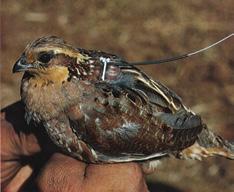



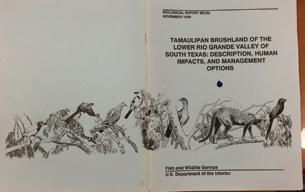




The 1980s saw some of the most significant changes for the entire Unit program. During the Reagan administration, the Unit program was threatened with closures. Although rescued by Congress with the aid of the many state and university cooperators of the program, upper administration with the US Fish and Wildlife Service felt the program had run its course and was no longer necessary. At one point, it was threatened that federal staffing of the Units would not be allowed even if funding were restored by Congress. Out of this turmoil, wildlife and fisheries units were combined, and the Oklahoma Cooperative Fish and Wildlife Research Unit came to be in 1984. The first leader of the combined Unit was Gene Maughan, who was the current leader of the OK Fisheries Unit and would go on to lead the AZ Unit after his tenure in OK ended in 1987.



7 Unit History: 1980s
19 80s
Unit History: 1990s
19 90s
Oklahoma Wildlife and Fisheries Research Unit — the 90s.



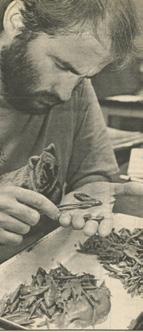




The OK CFWRU continued its mission through the 1990s under the leadership of Chip Leslie, who became the third leader of the Unit in 1989 and would be its longest serving leader, with 27 years of service as leader at his retirement in 2016. In 1998, the OK Unit celebrated its 50th anniversary with over 150 attendees, including past leaders and alumni. The 1990s also brought significant administrative change, with federal scientists, who were employees of the US Fish and Wildlife Service, being transferred to a new agency, the National Biological Survey (later, National Biological Service; NBS). This program was specifically identified for termination in the GOP’s Contract with America. To save the Unit program and other important federal research entities, NBS was rolled into a new division of an existing DOI agency, the US Geological Survey where federal employees of the program continue to be employed.

8
Oklahoma Wildlife and Fisheries Research Unit — the 00s.




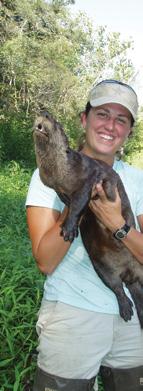


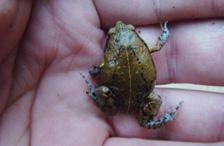
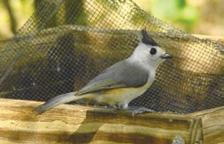


During the 2000s, 76 students associated with the OK Unit graduated with their MS and PhD degrees, more than any other decade. Unfortunately, the 2000s also saw the death of the OK Unit’s longest serving employee, Helen Murray, in 2007. Helen retired in 2005 after having served for 40 years. Along with Judy Gray, these two extraordinary individuals had served the OK Unit for 70 years and were celebrated with the creation of the Murray-Gray Unit Service Award in 2006, given to individuals with exemplary service to the Unit and beyond.

20 00s

9 Unit History: 2000s
Unit History: 2010s
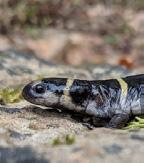



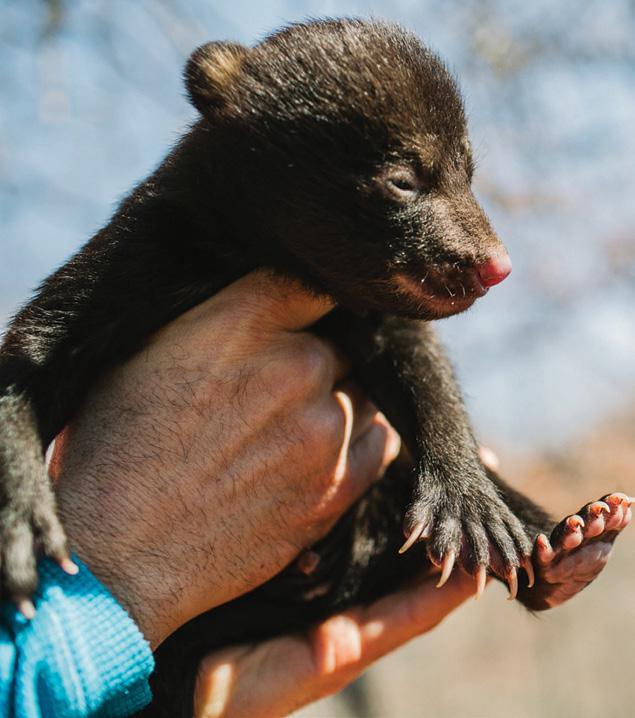
Oklahoma Wildlife and Fisheries Research Unit — the 10s. Change was the constant of the 2010s. After the creation of the Natural Resource Ecology and Management Department, the Oklahoma Unit moved out of its long-time home in Life Sciences West and the Department of Zoology to a newly renovated suite of offices on the ground floor of Ag Hall. New Assistant Leaders in Fisheries pursued projects focused mainly on stream ecosystems. Chip Leslie, the longest serving leader of the OK Unit, retired in 2016 after 31 years (27 as leader). The ponds below Lake Carl Blackwell, which were renovated to their current configuration in the late 1960s, saw a longoverdue second renovation, removing decades of sediment and replacing aging plumbing.







10
20 10s
Oklahoma Wildlife and Fisheries Research Unit — the 20s and current.






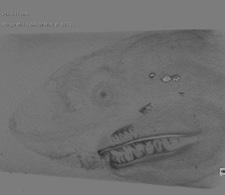



The OKCFWRU continues to provide training for the next generation of natural resource professionals, primarily through graduate-level education. As of 2022, the OKCFWRU has helped over 420 students receive their graduate degrees through OSU. Some of the older facilities are still providing valuable service, such as the ponds below Lake Carl Blackwell and the storage building on McElroy Road. Some, however, have seen the end of their life, such as West Lab that reached the end of its serviceable life in 2022. Some issues also continue to be just as important now as in the past, such as conservation of upland birds like bobwhite quail, black bears, and statewide fisheries resources. New facilities, such as the state-of-the-art wet lab at the Animal Nutrition and Physiology Lab and the upcoming New Horizons Agriculture building, have enabled Unit scientists and students to use innovative tools to address challenges of the third millennium.

11
History: 2020s
Unit
20 20s
Unit History: Mixed Photos


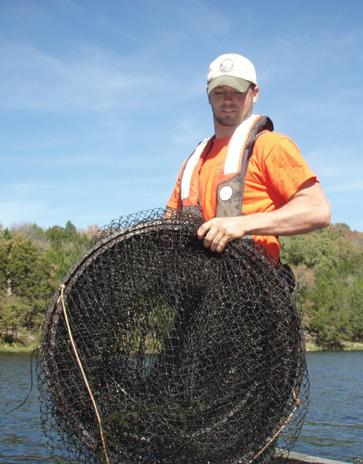




12
Theses and Dissertations
1950 – 2022
1950
DeARMENT, Richard D. Evaluation of Payne County, Oklahoma farmlands and vegetation patterns for bobwhite quail. M.S. (Advisor: Baumgartner)
FRANK, William J. Rodent populations and their reactions to grazing intensities on sand sagebrush grasslands in the southern Great Plains region. Ph.D. (Advisor: Taylor)
WHITE, Paul A. Conservation education in Oklahoma: problems with resource use. Ph.D. (Advisor: Taylor)
WINT, George B. Evaluation of the release of pen-reared bobwhites as a method of increasing quail populations in Oklahoma. M.S.

GLASS, Bryan P. Ecological factors affecting distribution and speciation of pocket gophers in Oklahoma. Ph.D. (Advisor: Taylor)
LINDZEY, James S. 1951. The white-tailed deer in Oklahoma: ecology, management, and production. Ph.D. (Advisor: Taylor)

PARKER, Richard L. Ecology and economics of Sciurus niger rufiventer (Geoffrey), in Payne County, Oklahoma. M.S.

MORRIS, Meredith J. An evaluation of plants suitable for bobwhite habitat management in central Oklahoma. Ph.D. (Advisor: Baumgartner)
1958
BLINN, Walter C. The short-grass plains and post oak-blackjack woodland of Oklahoma in historical perspective. M.S. (Advisor: Stebler)
COPELIN, Farrell F. Welfare status of the lesser prairie chicken in Oklahoma. M.S. (Advisor: Stebler)
ELLIS, Ralph J. Food habits and the control of coyotes in northcentral Oklahoma. M.S. (Advisor: Stebler)
ORR, Edwin O. The populations of fishes and limnological conditions of Heyburn Reservoir with reference to productivity. M.S. (Advisor: Dorris)
SCHEMNITZ, Sanford D. The habitat of the scaled quail (Callipepla squamata Vigors) in the Oklahoma Panhandle. M.S. (Advisor: Stebler)
1959
McCULLOCH, Clay Y., Jr. Populations and range effects of rodents on the sand sagebrush grasslands of western Oklahoma. Ph.D. (Advisor: Stebler)
1960

1953
HANSON, William R. Plants for improving land use and bobwhite habitat in northwestern Oklahoma. Ph.D. (Advisors: Taylor and Stebler)
1955
THOMAS, Carl H. Relationships of wild turkey social and spatial behavior to management. M.S. (Advisor: Taylor)
1957
BECK, John R. The wild turkey in south Texas. Ph.D. (Advisors: Taylor and Stebler)
DOWNING, Robert J. An evaluation of ground nesting by mourning doves in northwestern Oklahoma. M.S. (Advisor: Stebler)
BIRD, Charles D. Vegetational changes as related to waterfowl habitat in agricultural water bodies of Manitoba and Saskatchewan, Canada. Ph.D. (Advisor: Stebler)


1961
LANDES, Robert K. Phenology and ecology of migratory waterfowl at Fort Gibson Refuge and vicinity during the season 1960–61. M.S. (Advisor: Stebler)
1962
GOERTZ, John W. The influence of habitat quality upon density of cotton rat populations Ph.D. (Advisor: Stebler)
MARQUARDT, Richard E. Ecology of the migrating and wintering flocks of the small white-cheeked geese within the south central United States. Ph.D. (Advisor: Stebler)
13
Theses and Dissertations: 1950 – 2022
1963
JONES, Robert E. A comparative study of the habitats of the lesser and greater prairie chicken in Oklahoma. Ph.D. (Advisor: Stebler)
TUBB, Richard A. Population dynamics of herbivorous insects in a series of oil refinery effluent holding ponds. Ph.D. (Advisor: Dorris)
1964
DAVIS, Charles A. Components of the habitat of the bobwhite quail in Payne County, Oklahoma. Ph.D. (Advisor: Stebler)
GREEN, Peter M. Density of population as a regulating factor in the reproductive potential of Sigmodon hispidus . Ph.D. (Advisor: Stebler)
KIRKPATRICK, Ralph D. Evaluation of the lens weight as an aging technique for the cotton rat, Sigmodon hispidus Say and Ord. Ph.D. (Advisor: Glass)
MINTER, Kenneth W. Standing crop and community structure of plankton in oil refinery effluent M.S. (Advisor: Dorris)
1967
CLARK, Timothy W. 1967. Habitat selection by transplanted male deer in northwestern Oklahoma. M.S. (Advisor: Stebler)

GODDARD, Stephen V. 1967. Management of blackbird populations in western Oklahoma. Ph.D. (Advisor: Stebler)
1970
BIGHAM, Sam R. The comparative utility of plant life-form and other vegetational characteristics in evaluating the habitat of the cottontail. Ph.D. (Advisors: Stebler and Morrison)
CARPENTER, James W. Food habits of the mourning dove in northwest Oklahoma. M.S. (Advisor: Morrison)
JEARLD, Ambrose, Jr. Fecundity, food habits, age and growth, length-weight relationships, and condition of channel catfish Ictalurus punctalus (Rafinesque) in a 3300-acre turbid Oklahoma reservoir. M.S. (Advisor: Summerfelt)
MAUCK, Paul E. Food habits, length-weight relationships, and growth, gonadal-body weight relationships and condition of carp, Cyprinus carpio (Linnaeus), in Lake Carl Blackwell, Oklahoma. M.S. (Advisor: Summerfelt)
McGUIRE, Robert D. Aging Rio Grande wild turkey poults, Meleagris gallopavo intermedia (Sennett), by primary feather length and general body characteristics. M.S. (Advisor: Morrison)
PARRACK, Michael J. An analysis of three commercial harvest estimation procedures used in the Oklahoma commercial fishery. M.S. (Advisor: Summerfelt)
1968
CRAVEN, Richard E. 1968. Benthic macroinvertebrate and physiochemical conditions of Boomer Lake, Payne County, Oklahoma. M.S. (Advisor: Brown)

MAY, Jimmy R. 1968. Attrition rates of nonhunted bobwhite quail from band recovery rates with notes on the function of the “bobwhite” call. M.S. (Advisor: Smith)
NORTON, Joseph L. 1968. The distribution, character, and abundance of sediments in a 3000-acre impoundment in Payne County, Oklahoma. M.S. (Advisor: Summerfelt)
1965
BAKER, Robert J. Systematics and variation of Myotis subulatus (Say). M.S. (Advisor: Glass)
BIGHAM, Sam R. Reproduction of the wild cottontail rabbit in north central Oklahoma. M.S. (Advisor: Stebler)
BURKS, Sterling L. Utilization of Tishomingo Wildlife Management Unit by waterfowl and hunters. M.S. (Advisor: Stebler)
HANEBRINK, Earl L. A study of bird populations in selected habitats of northeast Arkansas. Ph.D. (Advisor: Baumgartner)
MARTIN, Richard P. Effects of herbicide applications on wildlife populations. M.S. (Advisor: Baumgartner)
TYLER, Jack D. Habitat types used by the bobwhite quail and other wildlife in southwestern Oklahoma. M.S. (Advisor: Stebler)
1966
HEPWORTH, Joseph L. 1966. Hematology of Sigmodon hispidus : average parameters compared with those under induced stresses. Ph.D. (Advisor: Stebler)
RAMSEY, Jed J. 1966. Some metabolic changes in chimney swifts (Chaetura pelagica) at lowered environmental temperatures. Ph.D. (Advisor: Baumgartner)
SPALL, Richard D. 1968. Occurrence and distribution of helminth parasites of fishes from Lake Carl Blackwell, Oklahoma. M.S. (Advisor: Summerfelt)
SPENCER, D. L. 1968. Sympatry and hybridization of the eastern and southern plains wood rats. Ph.D. (Advisor: Stebler)
WAGGERMAN, Gary L. 1968. The critical period for development of primary social habits among bobwhites. M.S. (Advisor: Smith)
1969
BOYER, Ronald L. 1969. Aspects of the behavior and biology of the longear sunfish, Lepomis megalotis (Rafinesque), in two Arkansas reservoirs. M.S. (Advisor: Summerfelt)
BROWN, Bradford E. 1969. An analysis of the Oklahoma state lake creel survey to improve creel survey design. Ph.D. (Advisor: R. Miller)

CROCKETT, Ben C. 1969. Quantitative evaluation of winter roosting sites on the Rio Grande turkey in northcentral Oklahoma. M.S. (Advisor: Smith)
DONALDSON, Douglas D. 1969. Effect on lesser prairie chickens of brush control in western Oklahoma. Ph.D. (Advisor: Stebler)
1971
DeBLASE, Anthony. F. The bats of Iran. Ph.D. (Advisor: Glass)
HUMPHREY, Stephen R. Population ecology of the little brown bat, Myotis lucifugus , in Indiana and north-central Kentucky. M.S. (Advisor: Glass)
TURNER, Paul R. Food habits of flathead catfish, Pylodictes olivaris Rafinesque, in six Oklahoma reservoirs. M.S. (Advisor: Summerfelt)
1972
STURDY, Jerry C. Production of forage and its utilization by Canada geese at Salt Plains National Wildlife Refuge. M.S. (Advisor: Bruneau)
TAFANELLI, Robert. Effects of intraperitoneal injections of cadmium chloride on gonads, liver, and kidney of goldfish, Carassius auratus (Linnaeus). Ph.D. (Advisor: Summerfelt)
Theses and Dissertations: 1950 – 2022 14
WARNER, Mark C. The seasonal cycle of oogenesis and parasitism in golden shiners, Notimegonus crysoleucas (Mitchell), infected with the microsporidian Pleistophora ovariae. Ph.D. (Advisor: Summerfelt)
ZWEIACKER, Paul L. Population dynamics of largemouth bass in an 808-hectare Oklahoma reservoir. Ph.D. (Advisor: Summerfelt)
1973
BUTTS, Kenneth O. Life history and habitat requirements of burrowing owls in western Oklahoma. M.S. (Advisor: Lewis)
DUNBAR, Michael R. Seasonal changes in testis morphology and spermatogenesis in adult and young-of-the-year coyotes (Canis latrans). M.S. (Advisor: McKinney)
DYER, James M. Evaluation of factors influencing trapping success for mourning doves in western Oklahoma. M.S. (Advisor: Morrison)
EARLS, Gary A. Comparison of man-days of fishing and fish harvest above and below a flood control hydroelectric impoundment bisecting an Oklahoma scenic river. M.S. (Advisor: Andrews)
FRYE, Roy G. Wildlife-oriented recreational opportunities on public school lands in Payne County, Oklahoma. M.S. (Advisor: Lewis)
LINGENFELTER, Dennis P. Growth of white crappie, Pomoxis annularis Rafinesque, in Grand Lake, Oklahoma, a 30-year-old impoundment. M.S. (Advisor: Summerfelt)
MILLER, Steven W. The common merganser: its wintering distribution and predation in a warm water reservoir. M.S. (Advisor: Barclay)
SPALL, Richard D. Studies of the ultrastructure, ontogeny, and transmission of Myrosoma pharyngeus and M. cyprinia (Protozoa: Myxosporida). Ph.D. (Advisor: Summerfelt)
TOBLER, Steven L. Food plots in relation to food availability for bobwhite quail. M.S. (Advisor: Lewis)
1974
HART, Larry G. A telemetric study of homing and home range of flathead catfish, Pylodictus olivaris (Raginesque), in an 850-hectare Oklahoma reservoir. M.S. (Advisor: Summerfelt)
HUGHES, David G. Cage culture of Tilapia mossambica in a highland lake of Guatemala. M.S. (Advisor: Summerfelt)

JOHNSON, Jeffrey N. Effects of water level fluctuation on growth, relative abundance and standing crop of fishes in Lake Carl Blackwell, Oklahoma. M.S. (Advisor: Andrews)
LEWIS, James C. Ecology of the sandhill crane in the southeastern Central Flyway. Ph.D. (Advisor: Morrison)
NESBITT, Stephen A. A vegetative study of two mallard release sites in east-central Oklahoma. M.S. (Advisor: Morrison)
SEGELQUIST, Charles A. Evaluation of wildlife forage clearings for white-tailed deer habitat management in a 600-acre Arkansas Ozark enclosure. Ph.D. (Advisor: Morrison)
STEICHEN, James M. The effect of lake destratification on water quality parameters. Ph.D. (Advisor: Garton)
UTSLER, Hal W. An evaluation of potential criteria for estimating age of coyotes. M.S. (Advisor: McKinney)
NAGEL, Mary L. Efficacy of feeding nitrofurazone for control of the microsporidian parasite Pleistophora ovariae. M.S. (Advisor: Summerfelt)
SHIRLEY, Kenneth E. Growth, production and mortality of largemouth bass during their first year of life in Lake Carl Blackwell, Oklahoma. M.S. (Advisor: Andrews)
SLIMANK, Michael W. Waterfowl (Anatidae) utilization of impoundments in a north-central Oklahoma watershed. M.S. (Advisor: Barclay)
1976
BOWMAN, David B. A comparison of Tilapia mossambica (Peters) and Tilapia aurea (Steindachner) as pond fishes in El Salvador, Central America. M.S. (Advisor: Summerfelt)
FREEMAN, Ronald C. Coyote x dog hybridization and red wolf influence in the wild Canis of Oklahoma. M.S. (Advisor: Shaw)

FULLER, Nita M. A nutrient analysis of plants potentially useful as deer food on clearcut and selective-cut pine sites in southeastern Oklahoma. M.S. (Advisor: Morrison)
GARNER, Gerald W. Mortality of white-tailed deer fawns in the Wichita Mountains, Comanche County, Oklahoma Ph.D. (Advisor: Morrison)
GEBHART, Glen E. Vertical distribution of fishes, Lake of the Arbuckles, Oklahoma, in relation to conditions of stratification. M.S. (Advisor: Summerfelt)
HASSIEN, Frederick D. A search for blackfooted ferrets in the Oklahoma Panhandle and adjacent areas and an ecological study of black-tailed prairie dogs in Texas County, Oklahoma. M.S. (Advisor: Lewis)
HOVER, Ronald J. Vertical distribution of fishes in the central pool of Eufaula Reservoir, Oklahoma. M.S. (Advisor: Summerfelt)

1975
ALLEN, Joe W. Introduction of Max McGraw Wildlife Foundation mallard ducks into Oklahoma and evaluation of their survival and adaptation. Ph.D. (Advisor: Morrison)
CHESEMORE, David L. Ecology of fox and gray squirrels (Sciurus niger and Sciurus carolinensis) in Oklahoma. Ph.D. (Advisor: Morrison)
DERDEYN, Clark H. Manipulating central Oklahoma rangeland vegetation for bobwhite quail. M.S. (Advisor: Morrison)
GORHAM, Walter E. Influences of United States Army Corps of Engineers reservoirs on waterfowl populations in Oklahoma. M.S. (Advisor: Barclay)
HYSMITH, Bruce T. Influence of sediment cycling on primary productivity in Lake Carl Blackwell, Oklahoma. M.S. (Advisor: Summerfelt)
LISH, James W. Status and ecology of bald eagles and nesting of golden eagles in Oklahoma. M.S. (Advisor: Lewis)
LOGAN, Thomas H., III. Characteristics of small impoundments in western Oklahoma, their value as waterfowl habitat and potential for management. M.S. (Advisor: Lewis)
MNICH, Michael A. Growth responses of a stunted bluegill population following hydrophyte removal by diuron. M.S. (Advisor: Summerfelt)
REYNOLDS, Ronald E. Evaluating beaver guards on restricted flow risers of Soil Conservation Service flood control impoundments in Oklahoma. M.S. (Advisor: Lewis)
RIEGER, Phillip W. An evaluation of the introduction of Florida bass into an Oklahoma reservoir receiving a heated effluent. M.S. (Advisor: Summerfelt)
SAVAGE, Donald R. Species composition and spatial distribution of vegetative communities on the Cookson Hills State Game Refuge. Ph.D. (Advisor: Morrison)
Theses and Dissertations: 1950 – 2022 15
1977
BARTUSH, William S. Mortality of white-tailed deer fawns in the Wichita Mountains, Comanche County, Oklahoma, Part II. M.S. (Advisor: Lewis)
BRABANDER, Jerry J. Wildlife population and habitat evaluation on a northcentral Oklahoma site using LANDSAT-1 imagery. M.S. (Advisor: Barclay)
COLLINS, Ellen I. Vegetational analysis of bobwhite habitat on northeastern Oklahoma rangeland. M.S. (Advisor: Tyrl)
HOLLE, Deborah G. Diet and general availability of prey of the coyote (Canis latrans) at the Wichita Mountains National Wildlife Refuge, Oklahoma. M.S. (Advisor: Glass)
MINCOLLA, Joseph A. The socio-economic impact of the coyote in Oklahoma. M.S. (Advisor: Shaw)
ORTH, Donald J. Development of a computer simulation model of largemouth bass population dynamics. M.S. (Advisor: Summerfelt)
SMITH, Rod W. Occurrence of the American woodcock in Oklahoma. M.S. (Advisor: Barclay)
TURNER, Paul R. Age determination and growth of flathead catfish. Ph.D. (Advisor: Summerfelt)
WALDRIP, Gene P. Elk habitat use during calving season with possible effects on whitetailed deer at the Wichita Mountains National Wildlife Refuge. M.S. (Advisor: Shaw)
WISEMAN, David S. Habitat use, food habits, and response to bird dog field trails of bobwhite on northeastern Oklahoma tallgrass prairie rangeland. M.S. (Advisor: Lewis)
WOOD, Don A. Status, habitat, home range, and notes on the behavior of the red-cockaded woodpecker in Oklahoma. M.S. (Advisor: Lewis)
1978
BLAIR, Kathleen B. The effects of channelization and impoundment on riparian small mammal communities in south central Oklahoma. M.S. (Advisor: Glass)
DAY, Susan D. A survey of furbearers and trappers in Oklahoma. M.S. (Advisor: Hecock)
HEDRICK, Ray D. Impact of channelization and associated land use changes on wildlife habitat. M.S. (Advisor: Barclay)
HELLER, Victor J. The effects of stream alteration and associated land use changes in riparian avifauna in southcentral Oklahoma. M.S. (Advisor: Barclay)
LEIDA, Mary N. Light and electron microscope study of the phagocytosis Pleistophora ovariae (Protozoa, Microspida) spores. Ph.D. (Advisor: Summerfelt)
LITVAITIS, John A. Movements and habitat use of coyotes on the Wichita Mountains National Wildlife Refuge. M.S. (Advisor: Shaw)
NIEMAN, Douglas A. Some aspects of the ecology of Florida and northern largemouth bass in a thermally enriched reservoir. M.S. (Advisor: Clady)
SHAW, Michael G. The prevalence of hematozoa and helminth infections in migratory and wintering waterfowl in Oklahoma. M.S. (Advisor: Kocan and Shaw)
WATERFIELD, Gerald B. Adequacy of fish and wildlife planning for Hugo Lake in southeastern Oklahoma. M.S. (Advisor: Clady)
1979
DOMANSKI, Patricia M. Numbers and distribution of waterfowl in Oklahoma during winter and spring. M.S. (Advisor: Vohs)

GROVER, Paul B. Habitat requirements of Charadriiform birds nesting on salt flats at Salt Plains National Wildlife Refuge. M.S. (Advisor: Knopf)
HATCHER, Richard T. Status of the red fox in Oklahoma and comparison of 3 furbearer survey techniques. M.S. (Advisor: Shaw)
THORWARDSON, Nancy K. Landowner constraints on Oklahoma hunting opportunities. M.S. (Advisor: Hecock)
ROSEBERRY, Stephen E. Effects of sport hunting on racoon reproduction, survival, and behavior. M.S. (Advisor: Shaw)
ROWE, Douglas J. Spotlighting deer for determination of population trends in Oklahoma. M.S. (Advisor: Vohs)

1981
GORDON, David H. Condition, feeding ecology, and behavior of mallards wintering in northcentral Oklahoma. M.S. (Advisor: Barclay and Talent)
HECTOR, Dean P. The habitat, diet, and foraging behavior of the Aplomado falcon, Falco femoralus (Temminck). M.S. (Advisor: Fox)
IVERSON, George C. Seasonal variation in lipid content and condition indites of sandhill cranes from mid-continental North America. M.S. (Advisor: Vohs)
JONES, Ray N. The community structure and interrelationship among darters (Percidae) in Glover Creek, Oklahoma. M.S. (Advisor: Maughan)
LANFORD, Patricia C. M. Distribution of fish and other organisms associated with an artificial floating tire breakwater in Lake Carl Blackwell. M.S. (Advisor: Clady)
PROKOP, Robert J. Wood duck distribution and production in Oklahoma. M.S. (Advisor: Vohs)
SCHOCH, William F. Possible causes of the small average size of crappie in some Oklahoma reservoirs. M.S. (Advisor: Clady)
TACHA, Thomas C. Behavior and taxonomy of sandhill cranes from mid-continental North America. Ph.D. (Advisor: Vohs)
1980
BATCHELLER, Gordon R. The ecology and behavior of blue jays in Oklahoma pecan orchards. M.S. (Advisor: Bissonette)
CANNON, Richard W. Current status and approaches to monitoring populations and habitats of lesser prairie chickens in Oklahoma. M.S. (Advisor: Knopf)
HEITMEYER, Mickey E. Characteristics of wetland habitats and waterfowl populations in Oklahoma. M.S. (Advisor: Vohs)
LAMBERT, Raymond A. Habitat and behavior of the American woodcock in northcentral Oklahoma. M.S. (Advisor: Barclay)
LEPPLA, Raymond R., II. An assessment of damage to pecans by wildlife in central Oklahoma. M.S. (Advisor: Barclay)
LOVE, Diane. The effect of land use on nest sites selected by Mississippi kites. M.S. (Advisor: Knopf)
MARTIN, Steven A. Current status and approaches to monitoring populations and habitats of greater prairie chickens in Oklahoma. M.S. (Advisor: Knopf)
OCKENFELS, Richard A. Habitat requirements of white-tailed deer in the post oak-blackjack oak habitat type. M.S. (Advisor: Bissonette)
O’MEILIA, Michael E. Competition between prairie dogs and beef cattle for range forage. M.S. (Advisor: Knopf)
ORTH, Donald J. Evaluation of a methodology for recommending instream flow for fishes. Ph.D. (Advisor: Summerfelt)
ROLLINS, Dale. Comparative ecology of bobwhite and scaled quail in mesquite grassland habitats M.S. (Advisor: Barclay)
YEOMANS, Jennifer A. An evaluation of wildlife enhancement activities in the residential content. M.S. (Advisor: Barclay)
1982
AULT, John W., III. A quantitative estimate of barn owl nesting habitat quality M.S. (Advisor: Bissonette)
EDDLEMAN, William R. A study of migratory American coots, Fulica americana , in Oklahoma. Ph.D. (Advisor: Knopf)
GILLILAND, Eugene R. Food habits of striped bass x white bass hybrids and largemouth bass in Sooner Lake, Oklahoma. M.S. (Advisor: Maughan)
Theses and Dissertations: 1950 – 2022 16
GLASS, Randal D. Exploitation of white crappie and associated species in Sooner Lake, Oklahoma. M.S. (Advisor: Maughan)
LAYZER, James B. Resources partitioning among young-of-year sunfish ( Lepomis spp.) and phenotypic variation of bluegills ( L. macrochirus). Ph.D. (Advisor: Clady)
McNEELY, David L. Niche relationships of the cyprinid fishes of Spring Creek, a tributary of the Neosho River, Oklahoma. Ph.D. (Advisor: Miller)
PATTERSON, Craig T. Foods of migrating coots ( Fulica americana) and sympatric ducks during fall and spring in northeastern Oklahoma. M.S. (Advisor: Bissonette)
ROLLEY, Robert E. Behavior and population dynamics of bobcats in Oklahoma. Ph.D. (Advisor: Shaw)
SCHWARTZ, Donald P. The use of Tilapia aurea (Steindachuer) (Cichlidae) to control aquatic vegetation in small ponds. M.S. (Advisor: Maughan)
STRONG, Paul I. V. Beaver-cottonwood interactions and beaver ecology in Big Bend National Park. M.S. (Advisor: Bissonette)
WILLIAMS, Kenneth W. Polyculture of caged channel catfish and Tilapia aurea in small ponds. M.S. (Advisor: Maughan)
ZIMMERMAN, John W. The common long-nosed armadillo ( Dasypus novemcinctus) in northcentral Oklahoma. M.S. (Advisor: Glass)
LAYHER, William G. Habitat suitability for selected adult fishes in prairie streams. Ph.D. (Advisor: Maughan)
McCAULEY, Elizabeth A. Effects of Oklahoma cross timbers riparian vegetation composition on avian community dynamics. M.S. (Advisor: Shaw)
MESTL, Gerald E. Survival of stocked channel catfish in small ponds. M.S. (Advisor: Maughan)
1984
BOYD, Norman W. Comparison of ectosymbiotic gill inhabitants of fish from two areas. M.S. (Advisor: Ewing)
CARTER, Michael F. Comparative winter ecology of the northern harrier and red-tailed hawk in Oklahoma. M.S. (Advisor: Shalaway)
CLASSEN, Norma L. Effects of stocking density and polyculture on gill ectosymbiont loads in cage cultured channel catfish and Tilapia aurea M.S. (Advisor: R. Miller)
COLLINS, Kenneth D. The effects of clearcutting on headwater streams in southeastern Oklahoma. M.S. (Advisor: Maughan)
HALL, Thomas C. Wildlife damage and control in Oklahoma pecan orchards. M.S. (Advisor: Schitoskey)
KEMMERER, Michael R. Physiological condition and sex determination of eastern meadowlarks in northcentral Oklahoma. M.S. (Advisor: Talent)
KLEINHOLZ, Conrad W. Changes in forage fish populations after introduction of striped bass x white bass hybrids. Ph.D. (Advisor: Maughan)
NELSON, Jana S. White-tailed deer and cattle interactions in south-eastern Oklahoma. M.S. (Advisor: Schitoskey)
WAGNER, Bruce A. Status and habitat utilization of the peppered shiner, Notropis perpallidus . M.S. (Advisor: Echelle)
WHISENANT, Keith A. Characteristics of smallmouth bass and Ozark bass populations in Buffalo National River, Arkansas. M.S. (Advisor: Maughan)
1985
BIDWELL, Terrence G. Home range and habitat use of the eastern wild turkey on commercial forest land in southeastern Oklahoma. M.S. (Advisor: Shalaway)
1986
BEEM, Marley D. Water quality and water exchange time in caged channel catfish culture. Ph.D. (Advisor: Maughan)
ERICKSON, Nanette E. Propagation of wetland vegetation on a riparian overflow area in central Oklahoma. M.S. (Advisor: Barclay)
HENRY, Christopher C. Fish-habitat associations in a turbid reservoir in north central Oklahoma. M.S. (Advisor: Maughan)

OAKEY, David D. The age, growth, and genetic structure of black and white crappie populations in a new Oklahoma reservoir. M.S. (Advisor: Talent)
TAYLOR, Thomas J. Planning techniques for renovation and management of the Deep Fork River, northcentral Oklahoma. M.S. (Advisor: Barclay)
1983
ADAMS, Steven R. Relationships between benthic macroinvertebrates and silviculture in southeastern Oklahoma. M.S. (Advisor: Maughan)
ANGYAL, Robert K. Determination of fishing and natural mortality of white crappie in Sooner Lake, Oklahoma M.S. (Advisor: Maughan)
da SILVA, Aecio M. Quantitative analysis of small-scale caged fish culture of channel catfish. M.S. (Advisor: Maughan)
HALEY, Donald E. Drinking, roosting, and feeding habitats of sandhill cranes wintering in western Texas and eastern New Mexico. M.S. (Advisor: Schitoskey)
KINZY, Cheryl R. Breeding behavior of the Mississippi kite (Ictinia mississippiensis) in northwestern Oklahoma. M.S. (Advisor: Schitoskey)
HILL, Laura A. Breeding ecology of interior least terns, snowy plovers, and American avocets at Salt Plains National Wildlife Refuge, Oklahoma. M.S. (Advisor: Talent)
KNAPP, Mary M. Effects of exploitation on crappie in a new reservoir. M.S. (Advisor: Talent)
MATLOCK, Julia K. The effects of clearcutting on trophic relations of benthic macroinvertebrates in streams of southeast Oklahoma. M.S. (Advisor: Maughan)
MEARNS, Susan L. Resource partitioning among centrarchids in Copan Reservoir. M.S. (Advisor: Talent)
SHULL, Alisa M. Age-specific reproductive behavior of male American bison. M.S. (Advisor: Shaw)
1987
MUONEKE, Maurice I. Population dynamics of white bass and striped bass hybrids in Lake Carl Blackwell. Ph.D. (Advisor: Maughan)
1988
JAHRSDOERFER, Sonja E. Tamaulipan brushlands of south Texas: description, human impacts, and management options. M.S. (Advisor: Leslie)
KING, Catherine E. An ethological comparison of three storks: Ciconia boyciana , C. ciconia , and C. magauri. M.S. (Advisor: R. Miller)
RATZLAFF, John A. The effects of early spring burning and mesquite density on plant species composition, biomass, and stem density in hardland range. M.S. (Advisor: Talent)
SCHULZ, Cynthia A. Response of nongame bird populations to herbicides in the Cross Timbers of Oklahoma. M.S. (Advisor: Leslie)
1989
BOGGS, James F. 1989. Effects of habitat modification on the parasite community ecology of small mammals and cottontail rabbits of Oklahoma. M.S. (Advisor: Lochmiller)
JAMES, Paul W. 1989. Reproductive ecology and habitat preference of the leopard darter, Percina pantherina . Ph.D. (Advisor: Maughan)

Theses and Dissertations: 1950 – 2022 17
McMURRY, Scott T. 1989. Effects of habitat modification with herbicide and prescribed burning on small mammal populations inhabiting Cross timbers rangeland in Oklahoma. M.S. (Advisor: Lochmiller)
RASKEVITZ, Robert F. 1989. Habitat use by white-tailed deer and elk on sympatric range enzootic for Parelaphostrongylus tenuis . M.S.
(Advisor: Shaw)
STANCILL, Wayne J. 1989. An evaluation of survey methodology and habitat use of waterfowl on Grand Lake, Oklahoma. M.S. (Advisor: Leslie)
STUBBS, Kevin C. Relative population abundance and size structure dynamics of white crappie in Skiatook Lake, Oklahoma, during a 5-year stage-fill. M.S. (Advisor: Zale)
TRAVNICHEK, Vincent H. Estimated entrainment of ichthyoplnkton through the Pensacola hydroelectric facility. M.S. (Advisor: Zale)
TUMLISON, C. Renn. Studies of taxonomy and geographic variation in plecotine bats of North America. Ph.D. (Advisor: Fox)
1991
CLARK, Brenda S. 1991. Activity patterns, habitat use, and prey selection by the Ozark big-eared bat ( Plecotus townsendii ingens). Ph.D. (Advisor: Leslie and Carter)

CUNNINGHAM, Kenneth K. 1991. Assessment of the effects of environmental variables on the fishery of the Kaw Lake tailwater, Oklahoma. M.S. (Advisor: Zale)
JENKS, Jonathan A. 1991. Effect of cattle stocking rate on the nutritional ecology of white-tailed deer in managed forests of southeastern Oklahoma and southwestern Arkansas. Ph.D. (Advisor: Leslie)
KELLY, Jeffrey F. 1991. The influence of habitat quality on the population decline of the redcockaded woodpecker in the McCurtain County Wilderness area, Oklahoma. M.S. (Advisor: Leslie and Zwank)
1990

ADORNATO, Todd G. Comparative influences of environmental parameters on abundances of hybrid striped bass and white bass in the Grand Lake tailwater. M.S. (Advisor: Zale)
BOHNSACK, Brian L. Factors affecting spawning locations and reproductive success of striped bass in the Arkansas River. M.S. (Advisor: Zale)
DINKINES, William C. Predicting adult and fawn white-tailed deer mortality using indices of nutritional and immunological condition. M.S. (Advisor: Lochmiller)
JACKS, L. Stewart. Movements and dynamics of a riverine stock of striped bass ( Morone saxatilis).
M.S. (Advisor: Zale)
SORENSON, Kent M. Entrainment susceptibilities of fishes inhabiting the lower portion of Grand Lake, Oklahoma. M.S. (Advisor: Zale)
LARSON, Robert D., Jr. 1991. Present status and distribution of the Arkansas River shiner, Notropis girardi (Pisces: Cyprinidae), and possible causes for its decline. M.S. (Advisor: Echelle)


MASTERS, Ronald E. 1991. Effects of timber harvest and prescribed fire on wildlife habitat and use in the Ouachita Mountains of eastern Oklahoma. Ph.D. (Advisor: Shaw)
SCHUETTE, James R. 1991. Seasonal dietary overlap between hartebeest and roan antelope in Burkina Faso, West Africa. M.S. (Advisor: Leslie)
PEOPLES, Alan D. Production, utilization, and nutritional quality of northern bobwhite foods in western Oklahoma. M.S. (Advisor: Lochmiller)
SHUTTERS, Marvin K. Effects of the addition of hydropower to Kaw Dam on striped bass egg abundances in the Arkansas River, Oklahoma. M.S. (Advisor: Zale)
SOPER, Roderick B. Effects of brush management on white-tailed deer (Odocoileus virginianus) in the Cross Timbers region of Oklahoma. M.S. (Advisor: Lochmiller)
1993
CHOI, S. Economic analysis of the Mountain Fork River trout fishery in southeastern Oklahoma using travel cost method. Ph.D. (Advisor: Schreiner)
LEE, H. Welfare measures of rural development: a regional general equilibrium analysis including non-market goods. Ph.D. (Advisor: Schreiner)
McMURRY, Scott T. Development of an in-situ mammalian biomonitor to assess the effect of environmental contaminants on population and community health. Ph.D. (Advisor: Lochmiller)
PEITZ, David G. Essential amino acid nutritional ecology of cottontail rabbits (Sylvilagus floridanus). M.S. (Advisor: Lochmiller)
THIES, Monte T. Cytogenetic aberrancy and organochlorine pesticide accumulation in the Mexican free-tailed bat: a comparison between Oklahoma and New Mexico populations. Ph.D. (Advisor: McBee)
UTYCH, Russell B. Compatibility of selenite crystal digging with breeding ecology of least terns and snowy plovers at Salt Plains National Wildlife Refuge in Oklahoma. M.S. (Advisor: Leslie)
1992
BOREN, Jon C. Essential amino acid nutritional ecology of bobwhite quail. M.S. (Advisor: Lochmiller)
LEON, Stuart C. Relationships between habitat and fish populations of a new reservoir. Ph.D. (Advisor: Maughan)
1994
KESSLER, E. Establishing baseline data for eastern Oklahoma small stream recreational fisheries. M.S. (Advisor: Schreiner)
SAMS, Michael G. The relationship between maternal condition and fawn survival in an overpopulated deer herd in northeastern Oklahoma. M.S. (Advisor: Lochmiller)
SCHWEITZER, Sara H. Abundance and conservation of endangered interior least terns nesting on salt flat habitat. Ph.D. (Advisor: Leslie)
Theses and Dissertations: 1950 – 2022 18
STONE, Kelli L. Shorebird habitat use and response to burned marshes during spring migration in south-central Kansas. M.S. (Advisor: Leslie)
WETHINGTON, Traci A. Foraging activity, habitat use, and cave selection by the endangered Ozark big-eared bat ( Plecotus townsendii ingens). M.S. (Advisor: Leslie)
WOOD, Gordon K. Evaluation of the population and habitat status of the endangered interior least tern on the Arkansas River, Oklahoma. M.S. (Advisor: Leslie)

YATES, Garry W. Supercritical carbon dioxide vs aqueous extraction of contaminated soils as a preparative procedure for acute toxicity testing. M.S. (Advisor: Burks)
1995
CORLEY/MARTINEZ, Bruce. A. Habitat and population characteristics of great blue heron rookeries in the south central Great Plains: partial validation of the great blue heron Habitat Suitability Index Model. M.S. (Advisor: Fisher)
DABBERT, Charles B. Potential role of amino acid nutrition malnutrition and climatic stressors in the modulation of immune function in bobwhite quail populations. Ph.D. (Advisor: Lochmiller)
GREENMAN, Todd M. Postfire characteristics of existing and potential black-capped vireo (Vireo atricapillus) nesting habitat on the Wichita Mountains Wildlife Refuge, Oklahoma. M.S. (Advisor: Shaw)
HAUSBECK, J. S. Analysis of trace metal contamination of coal strip mines and bioaccumulation of trace metals by Peromyscus leucopus . M.S. (Advisor: McBee)
HUSBY, M. Genetic damage in Peromyscus leucopus collected from abandoned strip mines in eastern Oklahoma. M.S. (Advisor: McBee)
KOENEN, Marcus T. Breeding ecology and management of least terns, snowy plovers, and American avocets. M.S. (Advisor: Leslie)
MARTIN, Craig D. Comparisons between Ozark and Ouachita stream fisheries in eastern Oklahoma. M.S. (Advisor: Fisher)
MARTIN, Larry K., Jr. Biomarker assessment of the effects of strip-mine and petroleum refinery contamination on channel catfish. M.S.
(Advisor: Black)
McCOY, J. Kelly. Mechanisms of selection for the evolution of sexual dimorphism in the collared lizard (Crotaphytus collaris). Ph.D.
(Advisor: Fox)
SIMMONDS, Robert L., Jr. Effect of piscivorous birds, particularly cormorants, on reservoir and aquacultural fishes in Oklahoma. M.S. (Advisor: Zale and Leslie)
STARK, William J. Genetic structure and systematics of smallmouth bass: zoogeography and implications for conservation. Ph.D. (Advisor: Echelle)
WILKERSON, Michael L. Movements, distribution and habitat preferences of striped bass in Robert S. Kerr Reservoir, Oklahoma.
M.S. (Advisor: Fisher)
1996
BALKENBUSH, Paul E. Population biology, management, and sampling considerations for black bass and sunfish in two eastern Oklahoma streams. M.S. (Advisor: Fisher)
BARKO, Valerie A. Effect of the black-tailed prairie dog on avifaunal composition in southern shortgrass prairie. M.S. (Advisor: Shaw)
COPPEDGE, Bryan R. Range ecology of bison on tallgrass prairie in Oklahoma. Ph.D. (Advisor: Shaw)
CROSSWHITE, Doyle L. Herpetofaunal responses to even-aged management and selective harvesting in the Ouachita Mountains, Arkansas. M.S. (Advisor: Fox)
JONES, Bob L. Effects of herbicide-induced vegetation changes on herpetofaunal populations on cross timbers rangeland. M.S. (Advisor: Fox and Leslie)

ROBEL, Greg. Bioenergetics of smallmouth bass ( Micropterus dolomieu) in Oklahoma hatcheries and streams. M.S. (Advisor: Fisher)
SCHETTER, Timothy A. Examination of the nitrogen limitation hypothesis in populations of cotton rats (Sigmodon hispidus). M.S. (Advisor: Lochmiller)
1997
FAUCETTE, Raymond F., Jr. Evaluation of a recirculating aquaculture-hydroponics system. Ed.D. (Advisor: Leslie)
JONES, Michael D. Taxonomic status and genetic structure of speckled chubs (Cyprinidae: CF. Macrhybopsis aestivalis) in the Arkansas River drainage. M.S. (Advisor: Echelle)
LUTTRELL, Geffery R. Conservation biology of the speckled chub complex (Cyprinidae: CF. Macrhybopsis aestivalis) in the Arkansas River basin. Ph.D. (Advisor: Echelle)
PIKE, Jason R. A geographic analysis of the status of mountain lions in Oklahoma. M.S. (Advisor: Shaw)
TOEPFER, Conrad S. Population and conservation biology of the threatened leopard darter. Ph.D. (Advisor: Fisher)
WHITTIER, Joanna B. Development of avian genotoxicity assays based on non-lethal techniques. M.S. (Advisor: McBee)
WILLIAMS, Lance R. Population viability analysis for the leopard darter (Percidae: Percina pantherina). M.S. (Advisor: Echelle)
WINTON, Bryan R. Breeding ecology of great horned owls and barred owls in relation to nesting interior least terns at Salt Plains National Wildlife Refuge, Oklahoma: 1995 and 1996. M.S. (Advisor: Leslie)
1998
BROWN, D. Kendall. Population viability analysis for Gila trout (Salmonidae: Oncorhynchus gilae), an endangered southwestern fish. M.S. (Advisor: Echelle)
COLE, Matthew L. Wildlife-habitat relationship model, avian community structure, and shorebird habitat use in south-central Oklahoma. M.S. (Advisor: Leslie)
JAMES, John B. Factors affecting wildliferelated power outages in electrical substations. M.S. (Advisor: Hellgren)
PAUKERT, Craig P. Population ecology of paddlefish in the Keystone reservoir system, Oklahoma. M.S. (Advisor: Fisher)
1999
CHAPPELL, William S. Habitat associations of fish assemblages on the Tishomingo National Wildlife Refuge M.S. (Advisor: Fisher)
STEWART, Montie D. Factors influencing eastern wild turkey nesting success in the Ouachita Mountains, Oklahoma. M.S. (Advisor: Masters)
2000
BURROUGHS, Jim P. Evaluation of stream fisheries management programs and development of a model program. M.S. (Advisor: Fisher)
CHAPMAN, Robert N. Characteristics of avian habitat within the southern mixed prairie of northwestern Oklahoma. M.S. (Advisor: Engle)
DITCHKOFF, Stephen S. Honest advertisement in male white-tailed deer: evidence for the handicap hypothesis of mate selection. Ph.D. (Advisor: Lochmiller)
FEIRER, Shane T. Nesting ecology of ardeids, including cattle egrets, and restoration on Ralstin Island in Northcentral Oklahoma. M.S. (Advisor: Leslie)
HARMON, Stephanie A. Genomic variability and MHC class IIB1 characterization in a reintroduced population of eastern wild turkeys. M.S. (Advisor: Van Den Bussche)
HYLER, Randy G. Responses of anglers to a differential harvest regulation on three black bass species in Skiatook Lake, Oklahoma. M.S. (Advisor: Fisher)
LONG, James M. Population dynamics and interactions of three black bass species in an Oklahoma reservoir as influenced by environmental variability and a differential harvest regulation. Ph.D. (Advisor: Fisher)
Theses and Dissertations: 1950 – 2022 19
NICHOLSON, David S. Implications for the influence of capture stress on selected demographics in eastern wild turkey hens. M.S. (Advisor: Lochmiller)
NICHOLSON, Lori L. Abundance, food habits, and habitat use by mammalian predators on Pushmataha Wildlife Management area. M.S. (Advisor: Shaw)
STARK, Richard C. Habitat use, daily movements, and body size of the Texas horned lizard in an urban environment in north-central Oklahoma. M.S. (Advisor: Fox)
TOWNSEND, Darrell E., II. Improving management for northern bobwhite (Colinus virginianus): re-evaluation of movements, nesting habitat and feeding ecology. M.S. (Advisor: Lochmiller)
REMSHARDT, William J. Effects of streamflow variation on smallmouth bass habitat in an alluvial system. M.S. (Advisor: Fisher)
RIEDLE, J. Daren. The ecology of the alligator snapping turtle, Macrochelys temminckii , in Oklahoma. M.S. (Advisor: Fox)
WHITTIER, Joanna B. Management implications of population genetics and demographics of least terns (Sterna antillarum). Ph.D. (Advisor: Leslie)
2002
CHAPPELL, Derrick E. Conservation genetics of North American wolverine (Gulo Gulo) populations: management implications M.S. (Advisor: Van Den Bussche)
FENNER, Daniel B. Interaction between introduced rainbow trout and three native fishes for food resources in an Ozark stream.
M.S. (Advisor: Winkelman)
GINGER, Shauna M. Effect of raccoon removal on opossum habitat use at multiple scales in a fragmented cross timbers ecoregion. M.S. (Advisor: Hellgren)
KASPARIAN, Maral A. Population characteristics of the Virginia opossum in the Cross Timbers Experimental Range during raccoon removal. M.S. (Advisor: Hellgren)
KASSON, Shane A. Effects of prescribed burning on cattail ( Typha latifolia) dominated marshes. M.S. (Advisor: Leslie)
KINER, Lisa K. The chemical restoration of Diamond Y Draw, Texas: effects on fishes and macroinvertebrates. Ph.D. (Advisor: Echelle)
CLARK, Jay E. Atmospheric deposition of nitrogen and nitrogen cycling: links to the small-mammal community Ph.D. (Advisor: Hellgren)
CRANDALL, Raelene M. Vegetation of the Pushmataha Wildlife Management Area, Pushmataha County, Oklahoma M.S. (Advisor: Tyrl)
HORNCASTLE, Valerie J. Associations of eastern redcedar and small-mammal community structure in the Oklahoma Cross Timbers. M.S. (Advisor: Hellgren)
LOFTIS, Dustin G. Genetic structure of remnant natural populations of the desert pupfish complex. Ph.D. (Advisor: Echelle)
ONORATO, David P. Conservation ecology of the metapopulation of black bears in the Big Bend ecosystem. Ph.D. (Advisor: Hellgren)

SHIRAKURA, Fumiko. Tornado damage and fire fistory in the Cross Timbers of the Tallgrass Preserve, Oklahoma. M.S. (Advisor: Hallgren)
WALSH, Maureen G. Evaluation of rainbow trout stocking in a northeastern Oklahoma Ozark stream. Ph.D. (Advisor: Winkelman)

2004
DAVIS, Stacey K. Cytonuclear genetic structure of a locally endemic fish (Poeciliidae: Gambusia heterochir) and a widespread congener (G. affinis) in an area of hybridization. M.S. (Advisor: Van Den Bussche)
LEIS, Sherry A. Effects of military training on soil, vegetation, and the small mammal community in a mixed prairie. M.S. (Advisor: Engle)
UNDERWOOD, David M. Genetic structure of the Macrhybopsis aestivalis complex (Teleostei: Cyprinidae) with emphasis on populations in the Arkansas and Red River basins. M.S. (Advisor: Echelle)
WEBB, Raymond E. Limitations in essential amino acid nutrition in cotton rats (Sigmodon hispidus) in Oklahoma. M.S. (Advisor: Leslie)
WOODWARD, Alan J. W. A landscape-level evaluation of the lesser prairie-chicken M.S. (Advisor: Fuhlendorf)
2001
COUGHLIN, Warren D. Genetic structure of spotted bass ( Micropterus punctulatus) in the Red River basin. M.S. (Advisor: Van Den Bussche)
ILSE, Linda M. Porcupines, pinyon pines, and pine engraver beetles: multitrophic interactions in pinyon-juniper woodlands of Texas. Ph.D. (Advisor: Hellgren)
LEVESQUE, Laurence P. Effect of land-use manipulations on habitat associations and demography of mesocarnivores in the Cross Timbers ecoregion of Oklahoma. M.S. (Advisor: Hellgren)
MALLOY, Terrence P. Introgressive hybridization between native and non-native smallmouth bass in Oklahoma. Ph.D. (Advisor: Echelle)
MARTIN, Keith W. Effects of passage manipulation on cave climate and bat behavior: management implications for cave-dwelling bats. Ph.D. (Advisor: Leslie)
PARSONS, Jennifer L. Nitrogen requirements of southern plains small mammals: dietary niche, life history, and environmental implications.
M.S. (Advisor: Hellgren)
MILLER, O. Dewayne. Efficacy of moistsoil management techniques on Hackberry Flat Wildlife Management area: response of vegetation, existing soil seed bank, and waterfowl. M.S. (Advisor: Leslie)
LUSK, Jeffrey J. Northern bobwhite abundance in relation to climate, weather, and land use in arid and semiarid areas: a neural network approach. Ph.D. (Advisor: Guthery)

MAUCK, Matt D. Factors influencing first year recruitment of striped bass in Lake Texoma. M.S. (Advisor: Winkelman)
TEJAN, Ellen C. Landscape-scale influences on stream fish assemblages in eastern Oklahoma. M.S. (Advisor: Fisher)
WEYANDT, Sarah E. Population genetics and phylogeography: investigating the evolution of North American bats. M.S. (Advisor: Van Den Bussche)
WHITTAKER, Terry D. The herpetofauna of Hispaniola with special emphasis on the Dominican Republic: description, anthropogenic effects, and management. M.S. (Advisor: Leslie)
SAGER, Clifton R. Evaluation of hybrid bluegill for use in urban recreational fisheries. M.S. (Advisor: Winkelman)
WOODS, Henri A. Seasonal changes in the physiology of male Virginia opossums (Didelphis Virginiana): signs of the dasyurid semelparity syndrome? M.S. (Advisor: Hellgren)
2003
BALES, Sara L. Population dynamics and habitat ecology of black bears in the Ouachita Mountains of Oklahoma. M.S. (Advisor: Hellgren)
Theses and Dissertations: 1950 – 2022 20
2005
CHURCHWELL, Roy T. The influence of patchburn management on the nesting ecology of grassland birds at the Tallgrass Prairie Preserve, Oklahoma M.S. (Advisor: Davis)

CRIFFIELD, Marc A. Density estimates, survey methods, and parasites of swift fox in Oklahoma M.S. (Advisor: Hellgren)
DISNEY, Michael R. Mesopredator abundance in oak forest patches: a comparison of scent station and live-trapping techniques. M.S. (Advisor: Hellgren)
SCHAFFLER, Jason J. Age, growth, and recruitment of striped bass in Lake Texoma, Oklahoma–Texas. Ph.D. (Advisor: Winkelman)
UTRUP, Nicholas J. Development of a rapid bioassessment protocol for sampling fishes in large prairie rivers. M.S. (Advisor: Fisher)
PERIARD, Timothy S. Herpetological survey of the Black Mesa Ecoregion, Oklahoma, with an emphasis on the ecology of the Texas horned lizard. M.S. (Advisor: Fox)
2008
BARRETT, Dominic A. Status and population characteristics of the northern river otter ( Lontra canadensis) in central and eastern Oklahoma. M.S. (Advisor: Leslie)
BRINKMAN, Eric L. Contributions to the life history of the alligator gar ( Atractosteus spatula Lacépède) in Oklahoma. M.S. (Advisor: Fisher)
BROWN, Angela G. Demographic characteristics and habitat associations of an expanding black bear in Oklahoma. M.S. (Advisor: Leslie)

BURGESS, Kevin. Use of water quality measurements to detect potential septic system input on Grand Lake, Oklahoma. M.S. (Advisor: J. Bidwell)
CAVALLIERI, Vincent S. The status of cerulean warbler and other forest birds in Oklahoma. M.S. (Advisor: O’Connell)
NEGUS, Sabrina G. The role of fluvial geomorphology in the distribution of freshwater mussels (Bivalvia: Unionidae) in the Kiamichi River, Oklahoma. M.S. (Advisor: Fisher)
LORENSEN, Jared. Use of cutoff channels by fishes in the Verdigris River, Oklahoma. M.S. (Advisor: Fisher)
PATTERSON, Chas P. Ecology of a reintroduced population of paddlefish, Polyodon spathula , in Lake Texoma. M.S. (Advisor: Fisher)
ROBERTSON, Scott G. Herbicide control and seed bank dynamics of Old World bluestem. M.S. (Advisor: Hickman)
2006
DAUWALTER, Daniel C. Relationships among geomorphology, habitat, and fishes in eastern Oklahoma streams: implications for stream restoration. Ph.D. (Advisor: Fisher)

ENDRISS, Debora A. Ecology of an urban population of the Texas horned lizard ( Phrynosoma cornutum) in central Oklahoma. M.S. (Advisor: Fox)
HACKLER, Joseph C. Assessment of genetic variation within and among natural and captive populations of alligator snapping turtles ( Macrochelys temminckii ). M.S. (Advisor: Fox)
McCLURE-BAKER, Sherri Ann. Status and genetic structure of the channel catfish complex (genus Ictalurus) in New Mexico and Texas. M.S. (Advisor: Echelle)
PERRY, Roger W. Stand- and landscape-level roost selection by forest bats in the Ouachita Mountains. Ph.D. (Advisor: Leslie)
SMITH, Stephanie J. Using genetic analyses to gain insight on a rare bat, Corynorhinus townsendii pallescens . M.S. (Advisor: Leslie)
WALTER, W. David. Ecology of a colonizing population of Rocky Mountain elk (Cervus elaphus). Ph.D. (Advisor: Leslie)
2007
KOIKE, Haruka. Genetic structure of refuge populations of the desert pupfish complex. M.S. (Advisor: Echelle)
2009
BALSMAN, Dane M. An evaluation of Oklahoma’s Close-to-Home-Fishing-Program. M.S. (Advisor: Shoup)
BODINE, Kristopher A. Temperature- and habitat-specific length bias and catch rate of electrofishing for blue catfish (Ictalurus furcatus). M.S. (Advisor: Shoup)
BURTON, Jesse A. The effect of fire frequency on the vegetation of an upland old-growth forest in eastern Oklahoma. M.S. (Advisor: Hallgren)
CRAVATT, Phillip L. Field and laboratory evaluation of an industrial effluent containing elevated levels of ammonia. M.S. (Advisor: J. Bidwell)
DOXON, Elizabeth D. Nesting and feeding ecology of grassland birds in mixed-grass prairie managed with patch-burn techniques. Ph.D. (Advisor: Davis)
GEORGE, Andrew D. Avian response to Old World bluestem ( Bothriochloa ischaemum) monocultures in mixed grass prairie. M.S. (Advisor: O’Connell)
2010
BARSTOW, Anita L. Ecology and conservation of the Pantanal cat, Leopardus braccatus (Cope, 1889): a species account. M.S. (Advisor: Leslie)
COYNER, Brandi S. Phylogenetic relationships and historical biogeography of the genus Akodon (Rodentia: Cricetidae). Ph.D. (Advisor: Van Den Bussche)
HENSLEY, Glen M. Fire effects on habitat quality for white-tailed deer (Odocoileus virginianus) within the Cross Timbers Ecoregion. M.S. (Advisor: Leslie)
TAYLOR, Dustin P. Effects of disturbance on the body condition, behavior, and corticosterone levels of wintering northern pintails. M.S. (Advisor: Smith)
WINTER, Stephen L. The interaction of fire and grazing in Oklahoma Artemisia filifolia shrubland. Ph.D. (Advisor: Fuhlendorf)
2011
ALBANESE, Gene. A multi-scale examination of stopover habitat use by migrant shorebirds. Ph.D. (Advisor: Davis)
BERRO, Alissa M. A classical biological control of saltcedar ( Tamarix spp) in Oklahoma. M.S. (Advisor, Royer)
BOECKMAN, Chad J. Characterizing zebra mussel ( Dreissena polymorpha) conditions, populations, and community effects in Oklahoma habitats. Ph.D. (Advisor: Bidwell)
JOHANSEN, Eric P. A survey of the freshwater turtles of eastern Oklahoma. M.S. (Advisor: Fox)
O’CONNELL, Jessica L. Influences of plant species distributions and soil organic carbon in playa catchments of the High Plains. Ph.D. (Advisor: Smith)
POLO, John A. Effects of prescribed fire on dead woody material in upland xeric oak forests of Oklahoma. M.S. (Advisor: Hallgren)
Theses and Dissertations: 1950 – 2022 21
PORTA, Michael J. Effects of environmental variation on stocking success of an endemic black bass species in the Chattahoochee River, Georgia. M.S. (Advisor: Long)
REILLEY, Michael. Essays on recreational demand for trout fishing on the Lower Mountain Fork River and municipal water conservation. M.S. (Advisor: Boyer)
2012
CROSBY, Andrew D. Northern bobwhite and bird community response to habitat restoration in Oklahoma. M.S. (Advisor: Elmore)
SCHMITT, Joseph D. Delayed-hooking mortality of blue catfish Ictalurus furcatus caught on juglines in Oklahoma reservoirs. M.S. (Advisor: Shoup)
2013
GATLIN, Michael R. The effects of hydrologic alteration on stream fish community structure in Lee Creek, Oklahoma. M.S. (Advisor: Long)
LEE, Dana N. Dietary analysis and conservation genetics of the endangered Ozark big-eared bat, Corynorhinus townsendii ingens . Ph.D. (Advisor: Van Den Bussche)
NEALIS, Ashley. Characteristics of two self-sustaining populations of paddlefish in northeast Oklahoma. M.S. (Advisor: Long)
ORR, Scott T. Long-term prescribed fire does not alter litter decomposition and bioavailable nitrogen in xeric oak forests. M.S. (Advisor: Hallgren)
SCHWEMM, Michael R. Zoogeography of Ouachita Highland fishes. Ph.D. (Advisors: Echelle and Van Den Busshe)
SPINKS, Rhonda L. Potential effects of climate change on Ozark big-eared bats and gray bats in Oklahoma. M.S. (Advisor: Leslie)
STEWART, David R. Factors related to stocking success of 178-mm channel catfish in medium size Oklahoma reservoirs. Ph.D. (Advisor: Long)
DYER, Joseph J. The impact of flow alterations to crayfishes in southeastern Oklahoma, with an emphasis on the mena crayfish (Orconectes mena). M.S. (Advisor: Brewer)
FOYE, Shane. Characterization of grounddwelling arthropod assemblages in northern bobwhite (Colinus virginianus) habitat. M.S. (Advisor: Greenwood)
GUIGERE, Allison. Resource partitioning in ant communities of arid grasslands in western Oklahoma. M.S. (Advisor: Greenwood)
MASLOSKI, Kenneth E. Comparative sampling methods and community composition of grasshoppers (Orthoptera: Acrididae) in northern bobwhite habitat. M.S. (Advisors: Mulder and Greenwood)
MOREHOUSE, Reid L. Species distributions and trait-environment correlations: implications for the evolutionary ecology of crayfish (Decapoda: Cambaridae). Ph.D. (Advisor: Tobler)

MUSSELMAN, W. Chris. The importance of maintaining shallow-water habitats for the movement and survival of stream fishes. M.S. (Advisor: Brewer)
SNOW, Richard A. Validation of daily ring formation in otoliths of alligator gar. M.S. (Advisor: Long)
TANNER, Christopher D. The effects of water quantity on water quality and fish community composition in the upper Cimarron River, Oklahoma. M.S. (Advisor: Long)
STARKS, Trevor A. Larval fish ecology in restored habitats in the lower Missouri River. M.S. (Advisor: Long)
TANNER, Evan P. 2015. The climate of Colinus and Callipepla : current patterns with future implications. Ph.D. (Advisor: Elmore)
THOMPSON, Maureen. Predictors of bat mortality rates at North American wind facilities and an evaluation of biases influencing mortality estimates. M.S. (Advisor: Loss)
2014
CARTABIANO, Evan C. Resilience of fish communities to extreme drought at Salt Plains National Wildlife Refuge: implications for endangered migratory birds and consequences of climate change. M.S. (Advisor: Long)
DALE, Leah L. Potential for aflatoxicosis in northern bobwhite (Colinus virginianus) exposed to contaminated grain at feeding stations. M.S. (Advisor: O’Connell)
2015
CARROLL, J. Matthew. Connecting environmental factors with northern bobwhite quail (Colinus virginianus) movement and habitat use patterns under a fire and grazing management regime in a semiarid region. Ph.D. (Advisor: Davis)
DOLMAN, Richard W. Small mammal communities and functional connectivity in the Lower Rio Grande Valley: a landscape perspective. Ph.D. (Advisor: Leslie)
FARLESS, Nicole. The influence of flow alteration on instream habitat and fish assemblages. M.S. (Advisor: Brewer)
HARRIS, Jonathan P. Estimating mesopredator predation risk for northern bobwhite. M.S. (Advisor: O’Connell)
ORANGE, Jeremy P. Breeding behavior, brood habitat use, and chick survival of two quail species at the periphery of their distributions. M.S. (Advisor: Davis)

2016
ARTZ, Emily J. Genetic mark-recapture abundance estimate and dietary preferences in a recently re-established American black bear population. M.S. (Advisor: Fairbanks)
MOLLENHAUER, Robert. Sampling the stream landscape: factors influencing detection and distribution of stream fishes. Ph.D. (Advisor: Brewer)
PFANDER, Morgan A. American black bear ecology in southeastern Oklahoma: population status and capture methodology. M.S. (Advisor: Fairbanks)
POWERS, Jarrod. Factors related to the distribution of freshwater mussels on Muddy and Clear Boggy rivers. M.S. (Advisor: Brewer)
2017
ALEXANDER, Justin. Determining the effects of altered thermal regimes on stream fishes of the Ouachita Mountain Ecoregion. M.S. (Advisor: Brewer)

ATUO, Fidelis A. Spatial distribution of aerial predators: influences on usable space for quail. Ph.D. (Advisor: O’Connell)
BEYTKE, Rachel L. Thermal ecology of two ground-nesting galliforms during a critical reproductive stage. M.S. (Advisors: Davis and Fuhlendorf)
DATTILO, John. Incorporating an approach to aid river and reservoir fisheries in an altered landscape. M.S. (Advisor: Brewer and Shoup)
DUQUETTE, Cameron A. Indirect effects of energy development in grasslands. M.S. (Advisors: Davis and Fuhlendorf)
JAFFE, Nicolas. Predictive mapping of priority birds in the Oaks and Prairies. M.S. (Advisor: O’Connell)
Theses and Dissertations: 1950 – 2022 22
JOHNSON, Garrett R. Assessing horizontally oriented acoustic methods for gizzard shad abundance assessments: accuracy, precision, and target orientation. M.S. (Advisor: Shoup)

JOHNSON, Jeffery R. Detection, occupancy, and distribution of Asian swamp eel ( Monopterus albus) in Georgia. M.S. (Advisor: Long)

LONDE, David. The effects of rangeland management and energy development on the habitat use of grassland birds in the Southern Great Plains. M.S. (Advisor: Fuhlendorf)
TAYLOR, Andrew T. Influences of fragmentation on fluvial-specialist black bass species. Ph.D. (Advisor: Long)
WORMINGTON, Jillian D. Facial marking form and function in subsocial Nicrophorus beetles. Ph.D. (Advisor: Luttbeg)
YAKLIN, Danielle M. The effects of prescribed fire for forest management on black bear forage availability, resource selection, and distribution in the U.S. Interior Highlands. Ph.D. (Advisor, Fairbanks)
ZHOU Yan. Quantifying groundwater interactions and implications on thermal regimes of streams. Ph.D. (Advisors: Brewer and Fox)
RAKOWSKI, Allison. Thermal ecology and effects of anthropogenic development on wild turkey. M.S. (Advisor: Elmore)
2019
BUTLER, Anna. 2019. Effect of fire and habitat interaction on arthropod forage for northern bobwhite broods. M.S. (Advisor: Wilder)
CLEARY, Matteo. Analyses of the psychological and demographic factors affecting acceptance capacity for American black bears in eastern Oklahoma. M.S. (Advisor: Fairbanks)
FRAKES, Adam K. An assessment of economic impact and visitor satisfaction: a case study from Canton Lake, Oklahoma. M.S. (Advisor: Joshi)
MILLER, Andy. Assessing the spawning movement and habitat needs of riverine Neosho smallmouth bass. Ph.D. (Advisor: Brewer)
MOUSER, Joshua B. Determining the presence and demographics of cave fish and cave crayfish populations using novel techniques.
M.S. (Advisors: Brewer and Van Den Buscche)
SEQUY, Lauren B. Non-native black bass: potential conflicts in fisheries management.
M.S. (Advisor: Long)
WOLF, Skylar. 2019. Assessing the effects of stocked rainbow trout on the distribution and abundance of native fishes of Spavinaw Creek. M.S. (Advisor: Brewer)
2021
EACHUS, Brian T. Comparison of zooplankton communities in Oklahoma: implications for paddlefish ( Polyodon spathula) management and restoration. M.S. (Advisor: Dzialowski)
GARY, Ryan A. 2021. Factors associated with paddlefish restoration in Oklahoma: availability of potentially suitable spawning substrates in reservoir tributaries. M.S. (Advisor: Long)
KNUTSON, Jennifer. Thresholds of woody vegetation tolerance among birds in the southern Great Plains. M.S. (Advisors: Davis and Fuhlendorf)
LONDE, David W. Spatial and temporal variability in environmental conditions and its influence on the habitat selection and reproduction of the greater prairie-chicken. M.S. (Advisor: Elmore)

McQUAIG, John D. Distribution of fireadapted woody plants and the effect of fire on vegetation types in the southern Great Plains. M.S. (Advisors: Davis and Fuhlendorf)
NEUMANN, Landon. The role that climate variability and landscape heterogeneity have on the movement ecology of northern bobwhite. M.S. (Advisors: Davis and Fuhlendorf)
2018
CADY, Samantha M. Ecological assessment of Ozark watersheds using breeding birds: a blueprint for riparian restoration. M.S. (Advisor: O’Connell)
DYER, Joseph J. Migration strategies and habitat use by blue sucker in the Red River Basin. Ph.D. (Advisor: Brewer)
FARRIESTER, Jacob W. Carrion beetles in orchards and ranches in Oklahoma and investigation of genes associated with antimicrobial production. M.S. (Advisor: Hoback)
HOLLY, Colt T. Habitat suitability and detection probability of longnose darter ( Percina nasuta) in Oklahoma. M.S. (Advisor: Long)
LUSTIG, Elliot J. American black bear ecology in the Oklahoma Ozarks: home range estimation, fragmentation analysis, and resource selection. M.S. (Advisor: Fairbanks)
PEREZ, Erica L. Population dynamics and infectious disease seroprevalence in American black bears of southeastern Oklahoma. M.S. (Advisor: Fairbanks)
2020
DUCK, Jeremiah L. An evaluation of the effectiveness of a trophy blue catfish regulation in Oklahoma. M.S. (Advisor: Long)
HAFEN, Thomas. Landscape-scale factors affecting detection and occurrence of threatened Yaqui catfish (Ictalurus pricei ) in the Yaqui River Basin, Mexico. M.S. (Advisor: Long)
MOORE, Desiree. Movement and flow-ecology: relationships of Great Plains pelagophil fishes. M.S. (Advisor: Brewer)
SWEDBERG, Dusty A. Assessing the distribution and habitat needs of least darter and sympatric species of the Ozark Highlands and Arbuckle Mountain ecoregions. M.S. (Advisor: Brewer)
REEVES, Jacob. 2020. Availability and nutrient content of common arthropod prey of northern bobwhites (Colinus virginianus) in western Oklahoma. M.S. (Advisor: Wilder)

WEDGEWORTH, Maeghen. Variation in abundance and hatch date of prairie chub Machrybopsis australis in the upper Red River Basin. M.S. (Advisor: Brewer)
2022
CADY, Samantha. Biotic and abiotic drivers of avian community dynamics. Ph.D. (Advisors: Davis and Fuhlendorf)
GORE, Madison. Wildlife management areas in Oklahoma: A study of economic importance and visitor satisfaction. M.S. (Advisor: Joshi)
Theses and Dissertations: 1950 – 2022 23
Aquatic Resources


CURRENT PROJECTS
Environmental drivers and seasonal variation of fish communities in intermittent streams of southeast Oklahoma
Intermittent streams numerically dominate river networks, yet the ecology and hydrology of these systems are poorly understood. Flows of intermittent streams are highly variable and include complete drying during the summer, short periods of drying between flashy flow events, and/ or dry riffles between isolated pools. We know fish use intermittent streams, but do not understand how different patterns of stream drying interact with other landscape factors to drive patterns of fish community structure. We combined electrical resistivity sensors and game cameras to link patterns of stream drying to landscape characteristics across the Glover River basin in southeast Oklahoma. We also quantified seasonal changes in fish community structure across an annual cycle of drying and rewetting. This work will provide information about the drivers of stream drying that can be used in projections of how intermittency will change under future climate scenarios. Further, our study will assess dynamics of intermittent habitats and link drying patterns to the fish that use them, a critical first step in identifying species vulnerable to drought and understanding how stream communities will respond to climate change.
FUNDING
U.S. Geological Survey, Oklahoma
Cooperative Fish and Wildlife Research Unit



FACULTY INVESTIGATOR
Lindsey Bruckerhoff
STUDENT INVESTIGATOR
Benjamin Kelly, M.S. Candidate
EXPECTED COMPLETION
Fall 2023
Freshwater non-insect invertebrates are highly imperiled due to persistent threats including declines in water quantity and quality, flow regime modification, overexploitation, non-native species, and disease. Gastropods and mussels are ecologically important as they contribute significantly to nutrient cycling and regulate primary production. Despite the recognized importance and documented decline of these groups, mussels and gastropods are severely understudied and the current distribution of many species is unknown. The flat floater Anodonta suborbiculata is listed as endangered in Kansas and was historically documented in oxbow lakes and floodplain slack-water habitats. Similarly, the sharp hornsnail Pleurocera acuta is listed as threatened in Kansas and has only been documented alive in a few locations. Our objectives are to determine drivers of occupancy and update current documented range of these two species in the oxbow lakes, marshes, floodplain ponds, and backwater habitats of the Marais des Cygnes and Neosho River basins of Kansas.

FUNDING
Kansas Department of Wildlife and Parks
FACULTY INVESTIGATOR
Lindsey Bruckerhoff, Bryan Murray
STUDENT INVESTIGATOR
Abigail Shake, M.S. Candidate
EXPECTED COMPLETION
Summer 2025
24
BENJAMIN KELLY (RIGHT), TANNER SCHOLTEN (CENTER), AND CALE COLREY (LEFT) SEINING SHELL ROCK CREEK, A TRIBUTARY TO THE GLOVER RIVER. (TANNERSCHOLTENPHOTOGRAPHY)
ABIGAIL SHAKE HOLDING ANODONTA SUBORBICULATA . (A. SHAKE
PHOTO)
Drivers of occupancy and updated range of threatened and endangered aquatic macroinvertebrates of the Marais des Cygnes and Neosho River basins
Aquatic Resources
Habitat associations and population genetic structure of the Endemic Beaded Darter Etheostoma clinton in the upper Ouachita River system
The Beaded Darter Etheostoms clinton is a small range endemic (SRE) species constrained to the Caddo River and upper headwaters of the Ouachita River. SREs are especially vulnerable to the suite of threats facing freshwater fishes and stochastic events, so population connectivity and gene flow play important roles in the persistence of these. Etheostoma clinton may be especially vulnerable since it is not only spatially restricted to two river systems, but also isolated above reservoirs. The objective of this study is to: 1) identify drivers of occupancy and habitat associations, 2) identify genetic structure across the upper Ouachita River system, and 3) describe reproductive aspects, including extent of reproductive season. Occupancy models will inform habitat associations and help document the phenology of spawning. We will apply nuclear DNA analysis to compare the genetic diversity and structure of E. clinton within and between the upper Ouachita and Caddo rivers. This study will update the distribution of E. clinton in the upper Ouachita River system and identify potential threats to the species by identifying drivers of the genetic structure.
FUNDING
Arkansas Game and Fish Commission
FACULTY INVESTIGATOR
Lindsey Bruckerhoff
STUDENT INVESTIGATOR
Madeline Schumacher, M.S. Candidate
EXPECTED COMPLETION
Summer 2025
The influence of abiotic and biotic factors on patterns of consumption across a range of consumer body sizes
A fundamental goal of ecology is to determine the role of consumers in ecosystems, and identifying drivers of consumer resource use is necessary to achieve this goal. Both consumer body size and environmental heterogeneity are known drivers of resource use, but environmental heterogeneity likely interacts with body size to influence patterns of consumption. This interaction, however, is not well understood. The objective of this research is to determine how environmental heterogeneity influences patterns of consumption across a range of consumer body sizes using stomach contents from over 400 Green Sunfish (Lepomis cyanellus) collected across a gradient of stream sizes. Diet item identity and size will be quantified to assess prey composition and size composition of Green Sunfish diets across an interactive gradient of fish body size and stream size. Other potential drivers of diet variability, including stream fish community composition or instream habitat characteristics, will also be assessed.
FUNDING
Oklahoma Cooperative Fish and Wildlife Research Unit, Ferguson College of Agriculture and Oklahoma Agriculture Experiment Station Undergraduate Research Program
FACULTY INVESTIGATOR
Lindsey Bruckerhoff
STUDENT INVESTIGATOR
Jamie Eastep, undergraduate student


EXPECTED COMPLETION
Spring 2023
Demographic models to predict Smallmouth Bass population responses to reservoir management and climate change
Water availability in the Colorado River basin has declined over the past two decades, primary driven by climate-change driven increases in air temperatures. The two largest reservoirs in the system, Lake Mead and Lake Powell, are at their lowest levels since they filled. Water managers are currently faced with making broad decisions about how water is used, moved, and stored across the Colorado River basin during this sustained drought. These water management decisions will likely influence river ecosystems, especially several endangered fish species, including the Colorado Pikeminnow. A major concern as reservoir levels drop is warmer reservoir release water temperatures will favor non-native fish species, especially smallmouth bass. There is a need to forecast native and non-native fish responses to future conditions and compare responses to different reservoir operations. Our goal is to develop predictive population models to assess the responses of fish populations to future climate conditions and management alternatives, including different reservoir operations and use these models to predict fish responses across the upper Colorado River basin.

FUNDING
U.S. Geological Survey
FACULTY INVESTIGATOR
Lindsey Bruckerhoff
EXPECTED COMPLETION
Fall 2025
25 LINDSEY BRUCKERHOFF HOLDING A COLORADO PIKEMINNOW SAMPLED IN THE UPPER COLORADO RIVER BASIN. (L. BRUCKERHOFF PHOTO)
Aquatic Resources
MADELINE SCHUMACHER FIN CLIPPING ETHEOSTOMA NIANGUAE FOR GENETIC ANALYSIS. (M. SCHUMACHER PHOTO) JAMIE EASTEP PRESENTING HIS RESEARCH AT THE OKLAHOMA STATE UNDERGRADUATE RESEARCH SYMPOSIUM. (L. BRUCKERHOFF PHOTO)
The impacts of intermittency of surface water crayfish communities
Crayfish are ecologically important as a resource to higher trophic levels and as drivers of coarse particulate organic matter processing. Crayfish therefore play important an important role in nutrient dynamics in stream systems. Crayfish are commonly captures in small, headwater streams. Headwater streams are prone to drying, however we do not understand the link between drying dynamics and crayfish population and community dynamics. We will assess a gradient of intermittency across a river basin and the coinciding effects it has on surface water crayfish communities by asking, 1.) does the intensity of stream drying influence crayfish occurrence, 2.) what factors influence crayfish community structure across a gradient of intermittent streams, and 3.) do crayfish communities change across seasons? This study is being conducted in the Glover River basin in the Ouachita Highlands ecoregion. Understanding linkages among stream drying patterns and crayfish community structure is critical for predicting how rare, endemic crayfishes of the Ouachita Highlands may respond to future climate conditions.
FUNDING
Oklahoma State University Freshman Research Scholars Program

FACULTY INVESTIGATOR
Lindsey Bruckerhoff
STUDENT INVESTIGATOR
Vanessa Rendon, undergraduate student
EXPECTED COMPLETION
Spring 2024
Effects of sucker gigging on fish populations in Oklahoma scenic rivers

Many species of suckers are ecologically and recreationally important, despite not being considered ‘sport fish’ in most states. Gigging suckers is a popular and culturally significant pastime in the Ozark Highlands, but little is known about harvest on population dynamics of suckers. Therefore, the objectives of this study are: 1) determine the spatial distribution of common sucker species during the spawning/gigging season, 2) determine the population size, age structure, and total mortality rate for common sucker species, and 3) model the effects of different harvest rates on sucker populations. The majority of suckers use the upper and lower sections of Spavinaw Creek to spawn. Survival is consistent across samples and species, and detection rates varied by sampling event (3-month periods). Population sizes, growth trajectories and length weight relationships vary between species. Harvest models suggest there appears little risk of recruitment overfishing at current exploitation levels, but some modest amount of growth overfishing is likely occurring.
FUNDING
Oklahoma Department of Wildlife Conservation
FACULTY INVESTIGATORS
Daniel E. Shoup, Shannon K. Brewer
STUDENT INVESTIGATOR
Douglas Zentner, Ph.D. Candidate
EXPECTED COMPLETION
March 2023
Striped Bass population dynamics in tailwater habitats of east-central Oklahoma

Striped Bass in the Robert S. Kerr riverreservoir complex provide a naturally reproducing recreational fishery. However, it is unknown when and to what extent Striped Bass use tailwater habitats, which are thought to have high angler exploitation. From June 2020 to June 2022, Striped Bass were tagged with dual acoustic/ radio telemetry tags (n = 106), passive integrated transponder (PIT; n = 3,200), and reward tags (n = 650) to estimate movement and angler exploitation rates. Movement of individuals was reduced with water temperatures above 23°C and decreased frequency of peak discharges. Preliminary estimates from the binomial known-fate model indicate mean survival rates of 64%. Preliminary annual fishing mortality is conservatively estimated to be 18% (not yet adjusted for angler compliance or tag loss rates). Most of this exploitation occurred when Striped Bass were in tailwater habitats during summer. Modeling is ongoing, but it appears there is little risk of overharvest given the large population size and annual movements that redistribute fish in tailwater habitats.
FUNDING
Oklahoma Department of Wildlife Conservation
FACULTY INVESTIGATOR
Daniel E. Shoup
STUDENT INVESTIGATOR
Alexander Vaisvil, Ph.D. candidate
EXPECTED COMPLETION
May 2023
26 VANESSA RENDON PRESENTING HER RESEARCH PROPOSAL IN HER FRESHMAN RESEARCH SCHOLARS FLASH TALK SYMPOSIUM. (K. HICKMAN PHOTO)
RELEASING A NORTHERN HOGSUCKER AFTER BEING
ZENTNER PHOTO)
TAGGED (D.
STRIPED BASS CAPTURED BY ELECTROFISHING (P. LEWIS)
Aquatic Resources
Support of the Oklahoma Fishery Analysis Application
This project maintains standard sampling fishery data for the Oklahoma Department of Wildlife Conservation in an R-based application. The application provides an analysis tool hosted on a web page using the Shiny package in R. Users select data of interest based on various parameters (lakes, years, sampling gears, etc.) or upload their own data and the application calculates fishery metrics for these data and provides output on a series of tabs. There is an additional tab that provides percentiles for each metric so users can see how their selected data compares to other lakes in Oklahoma, either using the default statewide percentiles or can restrict percentile calculations to specific regions, lakes, years, etc. New data are uploaded to the main analysis application twice/year, but a second validation application provides a tool for verifying data quality that allows users to view results of unloaded data between upload events. Additional development is ongoing for a new application to design creel studies, then verify and analyze data once they are collected.

FUNDING
Oklahoma Department of Wildlife Conservation
FACULTY INVESTIGATOR
Daniel E. Shoup
EXPECTED COMPLETION
June 2026
Acoustic survey design and analysis for evaluation of forage in large Arkansas reservoirs
The Arkansas Game and Fish Commission (AGFC) manages fisheries in many large reservoirs where Gizzard and Threadfin Shad are the primary forage. These pelagic species are difficult to accurately sample with traditional gears and hydroacoustic sampling is a promising alternative. Nighttime sampling during summer months around the new moon is typically recommended because shad become uniformly distributed in the water column and exhibit less boat avoidance. However, recent research found that vertical migrating Chaoborus (glassworms) can inflate nighttime hydroacoustic estimates of forage fish abundance. Further, this sampling approach results in only a 3–4week sampling window each year and can be dangerous for agency staff operating in the dark. We are evaluating how estimates differ between day and night to assess if daytime sampling is viable. In particular, we need to confirm that boat avoidance and acoustic shadowing by dense fish schools do not occur during daytime. Preliminary analyses of data from Beaver and DeGray Lakes indicate no Chaoborus interference, no extreme boat avoidance by fish (assessed via multibeam imagining sonar), and no significant acoustic shadowing by schools.
FUNDING
Arkansas Game and Fish Commission
FACULTY INVESTIGATOR
Daniel E. Shoup
STUDENT INVESTIGATOR
Joe Dittmer
EXPECTED COMPLETION
June 2025
Assessing aquatic macroinvertebrate communities in ephemeral ponds

Ponds are increasingly being recognized as a major contributor to aquatic invertebrate diversity that is nested within larger terrestrial networks. Ponds are ubiquitous across the globe, but have been relatively little studied. To better understand the role of ponds and their influence of hydroperiod, size, and presence of fish on aquatic macroinvertebrate communities, we studying the aquatic macroinvertebrate communities in ponds at the Aquatic Research Facility (ARF) at Oklahoma State University (OSU) and at the Osage Nation Ranch (ONR) located in Osage County, Oklahoma. Results to date indicate that fishless ponds contained more individuals with a community structure dominated by Diptera and Ephemeroptera families. Odonate families were largely unaffected by fish presence. Coleoptera families and Belostomatidae were also greatly reduced in the presence of fish.
FUNDING
U.S. Geological Survey, Oklahoma Cooperative Fish and Wildlife Research Unit, Department of Entomology and Plant Pathology

FACULTY INVESTIGATORS
James M. Long and W. Wyatt Hoback
STUDENT INVESTIGATOR
Gabrielle Jones, M.S. Candidate
EXPECTED COMPLETION
December 2024
27
PERCENTILE OUTPUT FOR LARGEMOUTH BASS ELECTROFISHING SAMPLES (D. SHOUP PHOTO) GABBY AT AN ISOLATED POOL ON A STREAM AT THE OSAGE NATION RANCH (J. LONG PHOTO) CAPTURING FISH ABUNDANCE WITH HYDROACOUSTIC SAMPLING (J. DITTMERS PHOTO)
Aquatic Resources
Assessing mussel diversity in the Verdigris and Caney river systems of north-central Oklahoma

Prairie rivers of north-central Oklahoma, such as the Verdigris and Caney rivers, harbor a diverse assemblage of freshwater mussels, but drivers of their abundance and composition are not well known. This project is studying the composition of freshwater mussel communities of the Verdigris and Caney rivers of northern Oklahoma using quantitative sampling in identified mesohabitats to estimate density and detection pr obability. Preliminary results have focused on one reach of the Verdigris River that was previously assessed approximately 20 years ago. Surveys of freshly dead shells showed that the greatest diversity occurred along the inside bend of the reach, nearest to the river where we documented 12 species, which is twice as many identified previously. Moreover, surveys of live mussels found 8 species, where previous studies only documented 3 species. The shell survey was 70% accurate at documenting live species presence, including Monkeyface (Quadrula metanevra), which is a species of greatest conservation concern.
FUNDING
Oklahoma Cooperative Fish and Wildlife Research Unit, Oklahoma Department of Wildlife Conservation
FACULTY INVESTIGATORS
James M. Long, Lindsey A. Bruckerhoff, Robert C. Lonsinger
STUDENT INVESTIGATOR
Hunter Torolski, M.S. Candidate; Jake Ternes, undergraduate student
EXPECTED COMPLETION
June 2025
Determining utility of side-scan and down-scan sonar to identify Paddlefish in rivers and reservoirs
Recreational-grade side-scan sonar (SSS) is being increasingly used for enumerating large-bodied (> 1 m total length [TL]) fishes, but studies with Paddlefish have been absent. We used SSS to identify a ballistics-gel filled fiberglass replica as well as count live fish in a river and a reservoir environment. With distance-sampling methods, we estimated the density of Paddlefish in Keystone Lake to be 7/ha and up to 30/ha in the Verdigris River during the spawning migration. In the reservoir, Paddlefish detection with SSS was limited so we investigated the utility of the down-scan channel. With two readers, we identified 75 Paddlefish, but estimated that up to 78 occurred in the scanned area. An added benefit of down-scan is determination of fish depth in relation to water depth. Paddlefish were found in depths from 3 to 11 m, but concentrated at 7 m.
FUNDING
Oklahoma Cooperative Fish and Wildlife Research Unit, Wentz Undergraduate Research Program

FACULTY INVESTIGATORS
James M. Long, Lindsey A. Bruckerhoff, Robert C. Lonsinger (Oklahoma State University); Richard A. Snow and Jason D. Schooley (Oklahoma Department of Wildlife Conservation)
STUDENT INVESTIGATORS
Ryan Gary, M.S. Candidate; Wyatt Wolfenkoehler, Pat Joyce, undergraduate students
EXPECTED COMPLETION
December 2023
Effect of turbidity on foraging by juvenile Paddlefish
We are investigating the potential for elevated turbidity to inhibit foraging by pre-rostrum Paddlefish. We set up a bank of 15, 10-gallon aquaria in a controlled environment and randomly assigned each to one of five water clarity treatment levels. For each trial, approximately 300 zooplankton were added to the aquaria followed by three post-larval Paddlefish, which were allowed to feed for 24 hours. After the 24hr period, Paddlefish were removed from the aquaria, euthanized with MS-222, and preserved in 70% ethanol. Numbers of zooplankton consumed by the Paddlefish varied among the turbidity treatments, with the least amounts in the most turbid environment. In addition, Paddlefish consumption of zooplankton exhibited a unimodal response, with maximum consumption at moderate clarity levels.

FUNDING
Oklahoma Cooperative Fish and Wildlife Research Unit, Ferguson College of Agriculture and Oklahoma Agriculture Experiment Station
Undergraduate Research Program
FACULTY INVESTIGATORS
James M. Long, Daniel E. Shoup, Andrew Dzialowski, (Oklahoma State University); Casey Pennock (Utah State University); and Jason Schooley (Oklahoma Department of Wildlife Conservation)
STUDENT INVESTIGATOR
Ethan Hood, undergraduate student
EXPECTED COMPLETION
June 2023
28 PLAIN POCKETBOOK FILTERING IN A RIFFLE OF THE CANEY RIVER (J. LONG PHOTO)
WYATT WOLFENKOEHLER WITH A FIBERGLASS REPLICA PADDLEFISH (J. LONG PHOTO)
Resources
ETHAN HOOD TAKING CARE OF JUVENILE PADDLEFISH IN EXPERIMENTAL AQUARIA (J. LONG PHOTO)
Aquatic
Assessing genetic diversity within the Smallmouth Bass complex in the central Interior Highlands
Recently, three species of former Smallmouth Bass (SMB) inhabiting the central Interior Highlands (CIH) have been described: Neosho Bass, Little River Bass, and Ouachita Bass. We have been investigating the status of these newly described species, first by designing a diagnostic panel of single nucleotide polymorphisms (SNPs), and subsequent by assessing genetic status across their native distributional ranges. The SNP panel consisted of 192 loci and had high power to distinguish CIH species from SMB as well as from congeneric Spotted Bass (SPB). Surveys across the range of CIH species showed low levels of admixture with SPB in most locations, although populations in two stream systems were elevated above 9%. Introgression with non-native SMB was also low across the ranges except in instances where past stocking occurred in reservoirs.

FUNDING
Oklahoma Cooperative Fish and Wildlife Research Unit

FACULTY INVESTIGATORS
James M. Long (Oklahoma State University); Andrew T. Taylor (University of North Georgia); Joe C. Gunn (University of Vermont); Jeff Buckingham and Aaron Kern (Arkansas Game and Fish Commission)
EXPECTED COMPLETION
December 2023
Terrestrial Resources CURRENT PROJECTS

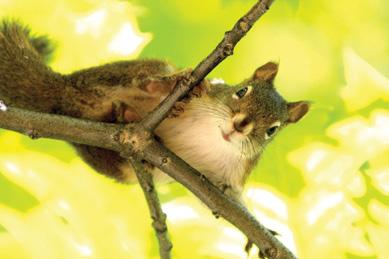

NEWLY DESCRIBED LITTLE RIVER BASS, A MEMBER OF THE SMALLMOUTH BASS SPECIES COMPLEX THAT IS ENDEMIC TO THE LITTLE RIVER BASIN OF THE OUACHITA MOUNTAINS (J. LONG PHOTO) Terrestrial Resources
Distributions and habitat associations of Whip-poor-will and other Oklahoma nightjars

Aerial insectivores, such as nightjars, are experiencing steep population declines across North America. The Whip-poor-will, for example, has declined by 69% since 1970. The population status and habitat associations of this species are largely unknown in Oklahoma due to its occurrence in remote forests, and the challenges of conducting nocturnal bird surveys. This project is increasing information about Whip-poorwill and other Oklahoma nightjars through development, validation, and implementation of a survey protocol that can be used in the future to monitor nightjar distributions and trends in the state. We are also analyzing factors influencing nightjar detectability, such as lunar phase and time of night, invaluable information that will help refine and optimize the survey protocol. Finally, surveys are generating an unprecedented level of detail about the Whip-poor-will’s distribution and habitat associations in Oklahoma. This study will provide a baseline for monitoring future changes in Whippoor-will population status, benefiting range-wide conservation efforts and thus ensuring that the ringing lullaby of this iconic species continues for generations to come.
FUNDING
Oklahoma Department of Wildlife Conservation
FACULTY INVESTIGATORS
Scott Loss, Timothy O’Connell, Robert Lonsinger
STUDENT INVESTIGATOR
Matthew Broadway, Ph.D. Candidate
EXPECTED COMPLETION
June 2025
Wild turkey population dynamics and brood survival
To determine possible causes for declining wild turkey populations in Oklahoma, we launched a 5-year study of population ecology and genetics at the beginning of 2022. The project aims to quantify nest initiation, incubation rates, nest success, poult and adult female survival rates, and genetic connectivity. To date, we put transmitters on 28 females; documenting 9 nest incubation attempts, 2 of which hatched. We captured 3 out of 6 poults from the first brood and all 3 poults from the second brood the day after they hatched. All monitored poults were depredated in early June. We recorded 13 mortalities among the monitored adult females, with 10 attributed to predation, 1 to capture myopathy, and 2 to unknown causes. In addition to monitoring hens, nests, and poults, we conducted vegetation sampling at nest sites, brood sites, and random locations throughout the summer. We also monitored home range, habitat selection, and movement for all tagged females. Genetic samples were collected from approximately 125 hunter-harvested turkeys statewide.


FUNDING
Oklahoma Department of Wildlife Conservation
FACULTY INVESTIGATORS
Dwayne Elmore, Colter Chitwood, Craig Davis, Sam Fuhlendorf (Oklahoma State University; Evan Tanner and Randall DeYoung (Texas A&M University-Kingsville)
STUDENT INVESTIGATORS
Nicolle De Filippo, M.S. Candidate; Cody Griffen, Ph.D. Candidate
EXPECTED COMPLETION
June 2026
Quail ecology and management II
This multi-faceted project explored movement patterns of bobwhite using GPS technology, examined the influence of woody vegetation, and determined the influence of disking, fire and grazing on bobwhite food resources. Bobwhite selection of woody cover appeared to be influenced most by air temperature and solar radiation intensity. Further, air temperature, solar radiation, and wind speed were important factors influencing hourly bobwhite movement. Using long-term bobwhite telemetry data, we determined strong selection against tree use at Packsaddle WMA, but no relationship at Beaver River WMA. There was selection for shrub cover at both WMAs. Burning had significant, positive effects on total arthropod abundance and biomass, while disking did not result in directional effects on abundance or biomass. Substantial differences between orders in macronutrient (protein and lipid), indigestible (exoskeleton), and elemental (carbon and nitrogen) content were observed.
FUNDING
Oklahoma Department of Wildlife Conservation
FACULTY INVESTIGATORS
Craig Davis, Sam Fuhlendorf, Shawn Wilder, Laura Goodman, and Dwayne Elmore
STUDENT INVESTIGATORS
Kent Andersson, Senior Research Specialist; Samantha Cady, Completed Ph.D. Student; Landon Neumann, John McQuaig, Jennifer Knutson, Jacob Reeves, and Anna Butler, M.S. Candidates
COMPLETED
June 2022
30
STUDENT INVESTIGATOR MATT BROADWAY HANDLES A WHIP-POOR-WILL AS PART OF A SIDE STUDY USING DNA METABARCODING TO IDENTIFY WHIP-POOR-WILL FOOD SOURCES FROM FECAL PELLETS. (S. LOSS PHOTO)
MASTER’S STUDENT NICOLLE DE FILIPPO ATTACHING BACKPACK STYLE TRANSMITTER TO CAPTURED HEN (D. ELMORE PHOTO)
Terrestrial Resources
RELEASING QUAIL FOR STUDY OF MOVEMENT (C. DAVIS PHOTO)
Visitors’ characteristics and economic contribution of WMAs in Oklahoma
The ODWC-funded research quantified the economic significance of Wildlife Management in Areas (WMAs) in Oklahoma. To accomplish the study goal, we designed a survey instrument and administered it among 3,000 hunting and fishing licenses or conservation passport holders in the state. Our study conducted a travel cost analysis, input-output analysis, and visitor satisfaction analysis. The economic value placed by a WMA visitor varied from $15.95 to $28.09, depending upon the modeling assumption. Likewise, statewide economic impact analysis revealed economic outputs, value-added, and employment opportunities created by WMAs. The consumptive WMA visitors in Oklahoma revealed higher levels of satisfaction than those making trips for nonconsumptive activities (e.g. hiking, walking).
FUNDING
Oklahoma Department of Wildlife Conservation

FACULTY INVESTIGATOR
Omkar Joshi
STUDENT INVESTIGATOR
Madison Gore, M.S. Candidate
COMPLETED
July 2022
Evaluating patterns of occurrence for native and invasive mammals


Invasive feral swine (Sus scrofa) have significantly impacted natural resources. Pervasive habitat degradation by feral swine may influence the diversity and occurrence of native wildlife communities. Feral swine were first documented in Wichita Mountains Wildlife Refuge (WMWR) in 1993. Although feral swine constitute a serious threat to native habitats and wildlife, their direct and indirect impacts on native faunal communities at WMWR have not been formally assessed. Despite considerable control efforts and costs, swine have persisted at WMWR and impacts of control on swine have not been formally quantified. Data on feral swine space use patterns can improve efficacy of control and provide insights on the impacts of control on swine populations. Furthermore, assessing the spatial variation of feral swine impacts on wildlife communities can inform conservation of native species. We have initiated a study to quantify patterns of swine activity, evaluate the impacts of feral swine on the diversity and occurrence of native wildlife, and inform management of WMWR.
FUNDING
U.S. Geological Survey, Oklahoma State University Department of Natural Resource Ecology and Management, Oklahoma Cooperative Fish and Wildlife Research Unit
FACULTY INVESTIGATOR
Robert Lonsinger
STUDENT INVESTIGATOR
Ben Murley, M.S. Candidate
EXPECTED COMPLETION
May 2024
Co-occurrence models fail to infer underlying patterns of avoidance and aggregation when closure is violated
Advances in multi-species monitoring have led to an increase in the use of multispecies occupancy to assess patterns of co-occurrence among species, even when data were collected at spatial or temporal scales that likely violated the assumption that sites were closed to changes in occupancy state for the target species. Violating the closure assumption may lead to erroneous conclusions related to patterns of co-occurrence among species, but this has not been formally assessed. I simulated occurrence for two hypothetical species under patterns of avoidance, aggregation, or independence, when the closure assumption was either met or not. Sample data were analyzed with conditional two-species occupancy models and performance was assessed by comparing the proportion of simulations recovering the true pattern of co-occurrence. When patterns of avoidance and aggregation were simulated, conditional two-species models tended to correctly find support for non-independence and estimated species interaction factors aligned with predicted values when closure was met. When closure was violated, models tended to incorrectly infer a pattern of independence and power to detect simulated patterns of avoidance or aggregation decreased with smaller sample size.
FACULTY INVESTIGATOR
Robert Lonsinger
COMPLETED
June 2022
31
MADISON GORE IN THE FIELD (D. CONNER PHOTO)
Terrestrial Resources
GRADUATE STUDENT BEN MURLEY COLLECTS CONDUCTING SMALL MAMMAL TRAPPING IN WICHITA MOUNTAINS WILDLIFE
TO QUANTIFY SPATIAL VARIATION
CO-OCCURRING
REFUGE
IN SMALL MAMMAL (R. LONSINGER PHOTO)
DEER AND ELK INTERACTING AT WICHITA MOUNTAINS (B. MURLEY PHOTO)
Movements and population demography of pronghorn in western Oklahoma
The pronghorn ( Antilocapra americana) is a popular big game species in Oklahoma and a conservation success story across the American West. However, pronghorn populations in Oklahoma are restricted to the panhandle, which is characterized by extreme weather events, high variability in resource availability, and an increasing influence of agricultural operations and energy infrastructure. Our team is conducting a comprehensive study of survival, recruitment, and cause-specific mortality in adult pronghorn and fawns. We will model population dynamics to investigate the population trajectory and identify limiting vital rates. Analysis of movement data will determine environmental variation on space use and resource selection. We will relate space use and resource selection to population demographics in the Oklahoma pronghorn population.
FUNDING
Oklahoma Department of Wildlife Conservation
FACULTY INVESTIGATORS
W. Sue Fairbanks, M. Colter Chitwood, Robert Lonsinger (Oklahoma State University); George Wang (East Central University); Evan Tanner, Michael Cherry, Randall DeYoung, and Levi Heffelfinger (Texas A&M University-Kingsville)
STUDENT INVESTIGATORS
Derek Hahn, M.S. Candidate and Matthew Turnley, Ph.D. Candidate (Oklahoma State University); Marlin Dart, Ph.D. Candidate (Texas A&M Kingsville)

EXPECTED COMPLETION
June 2026
Status and trends in bobcat populations in Oklahoma

Bobcats (Lynx rufus) are one of the most harvested furbearer species in Oklahoma. Bobcats are also important predators of small mammals, assisting in control of rodent and rabbit populations. The secretive nature of bobcats and their widespread distribution make it difficult to monitor populations. Our study will evaluate use of non-invasive hair snare methods, combined with occupancy modeling, to assess large-scale trends in bobcat populations across the state. Hairs were identified to species microscopically and validated with genetics. Hair snares were also deployed more intensively. January-March each year on three WMAs to compare effectiveness of genetic capture-recapture techniques camera-trap methods. All of these monitoring techniques are independent of monitoring based on harvest data, which could be affected by multiple external factors such as weather and fur prices.
FUNDING
Oklahoma Department of Wildlife Conservation, OSU Department of Natural Resource Ecology and Management, Theodore Roosevelt Memorial Fund, American Museum of Natural History
FACULTY INVESTIGATOR
W. Sue Fairbanks
STUDENT INVESTIGATOR
Nathan Proudman, Ph.D. Candidate
EXPECTED COMPLETION
February 2023
Factors affecting female black bear harvest in northcentral Pennsylvania

From 2019–2021, hunting seasons for American black bears (Ursus americanus) in Pennsylvania increased in length and changed in structure compared to prior years. Factors that influence bear harvest vulnerability during these expanded hunting seasons is unknown. Fall movement patterns of bears vary annually and may depend on fall hard mast availability. Understanding the variability in movements among bears throughout hunting seasons and their fates can inform management. We trapped and GPScollared adult female bears in the Sproul State Forest of northcentral Pennsylvania from 2019–2021 to determine home range sizes, patterns of resource selection, and sources of mortality. We assessed relative abundance of fall hard mast to characterize annual variability in mast availability. We evaluated temporal and spatial variation in hunter activity with road-side surveys and remote cameras, respectively. Beginning 1 September, we estimated weekly home range size and evaluated the influence of predictors hypothesized to influence resource selection. We investigated factors influencing survival during bear hunting seasons with known-fate models.
FUNDING
Pennsylvania Game Commission
FACULTY INVESTIGATOR
Robert Lonsinger
STUDENT INVESTIGATOR
Brandon Snavely, M.S. Candidate
EXPECTED COMPLETION
May 2023
32 Terrestrial Resources
OSU RESEARCHERS TAGGING A PRONGHORN FAWN (B. MONTGOMERY PHOTO)
BOBCAT PHOTOGRAPHED WITH A WILDLIFE TRAIL CAMERA (N.J. PROUDMAN PHOTO) GRADUATE STUDENT BRANDON SNAVELY RADIO-COLLARS
AN ADULT FEMALE BLACK BEAR IN NORTHCENTRAL PENNSYLVANIA (B. SNAVELY PHOTO)
Evaluating the population status of black bears in the Oklahoma Panhandle

The American black bear (Ursus americanus) is an economically and ecologically important species of management interest across its distribution. Once abundant in Oklahoma, black bears were extirpated from the state by the early 1900s. Black bears have been recolonizing eastern Oklahoma in the past two decades. In the western part of the Oklahoma panhandle, black bear observations have also increased, however, it is unclear if this constitutes a resident, self-sustaining population. We initiated a non-invasive study in Cimarron County, Oklahoma, to 1) identify factors influencing black bear detection, evaluate black bear space use, and identify factors associated with black bear occurrence using camera trap surveys, 2) estimate the number and sex ratio of black bears, and 3) assess connectivity of black bears in the Oklahoma panhandle with populations in New Mexico and Colorado. To accomplish these goals, we are using camera trapping and noninvasive genetic sampling (hair snares) combined with occupancy modeling, capture-recapture analyses, and population genetic analyses.
FUNDING
Oklahoma Department of Wildlife Conservation
FACULTY INVESTIGATORS
Robert Lonsinger and W.
STUDENT INVESTIGATOR
Bailey
Sue Fairbanks
Kleeberg, M.S. Candidate
EXPECTED COMPLETION
May 2024
Spatial ecology and expansion of recolonizing black bear populations in eastern Oklahoma


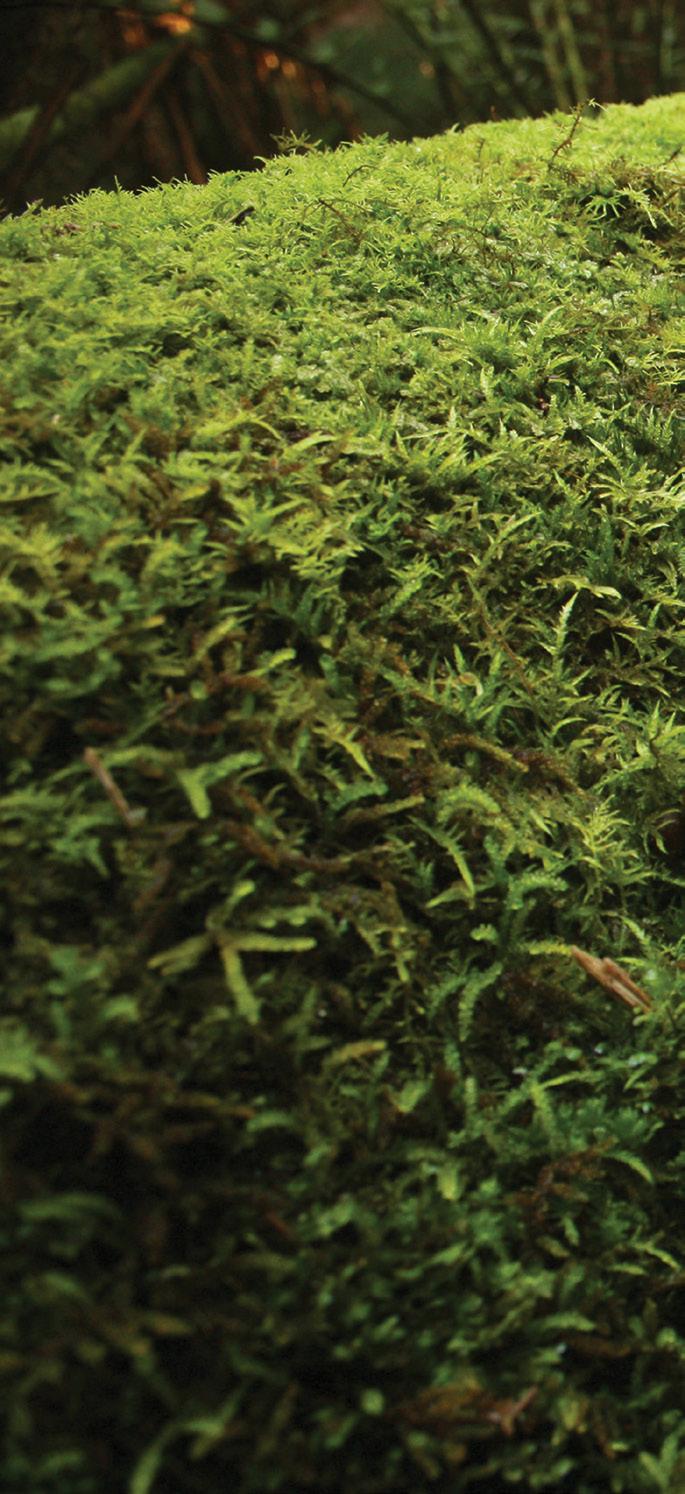
Black bears are recolonizing two areas of eastern Oklahoma that differ in human density, black bear density, land use, and habitat fragmentation. Proximity to humans poses both risks (increased mortality) and benefits (predictable food subsidies) for black bears. Knowledge of the spatial ecology of black bears in eastern Oklahoma will provide a more detailed picture of how bears are distributed across the landscape, help predict range expansion by the populations, and anticipate potential for bear-human conflict. In the east-central population, previous research indicated female black bears are sensitive to habitat fragmentation. We have deployed satellite collars with a 2-hour fix rate on yearling bears to investigate their movement patterns and the factors that influence them during dispersal to establish a new home range. In the southeastern population, we are using spatially-explicit data from satellitecollared bears to produce a more accurate population estimate and identify natural and anthropogenic features associated with high- and low-density areas.
FUNDING
Oklahoma Department of Wildlife Conservation

FACULTY INVESTIGATOR

W. Sue Fairbanks
STUDENT INVESTIGATORS
Courtney Dotterweich and Jake Humm, Ph.D. Candidates
EXPECTED COMPLETION
June 2023
Scholarly Activities
COURTNEY DOTTERWEICH EXAMINING A BLACK BEAR (C. HERNANDEZ PHOTO)
IN CIMARRON COUNTY, OKLAHOMA DURING SUMMER 2022 (B. KLEEBERG PHOTO)
A
BLONDE-PHASED BLACK BEAR CAPTURED ON CAMERA
Scholarly Output 01 JAN 2020 31
DEC 2022
PUBLICATIONS
Bruckerhoff, L.A., K. Wheeler, K. Dibble, B.A. Mihalevich, B.T. Neilson, J. Wang, C.B. Yackulic, and J.C. Schmidt . 2022. Water storage decisions and consumptive use constrain ecosystem management under severe sustained drought. Journal of the American Water Resources Association DOI: 10.1111/1752-1688.13020.
Butler, A., C.A. Davis, S.D. Fuhlendorf, and S.M. Wilder. 2020. Effects of fire on ground-dwelling arthropods in a shrub-dominated grassland. Ecology and Evolution 11:427-442.
Cady, S.M., C.A. Davis, S.D. Fuhlendorf, R. Scholtz, D.R. Uden, and D. Twidwell . 2021. A generalist bird exhibits site-dependent resource selection. Ecology and Evolution 11:12714–12727.
Carroll, J.M., R. L. Carroll, C.A. Davis, R.D. Elmore, and S.D. Fuhlendorf. 2022. Multi-episode depredations at two sympatric quail nests. The Wilson Journal of Ornithology 134: DOI: 10.1676/22-00031.
Carroll, R.L., C.A. Davis, S.D. Fuhlendorf, R.D. Elmore, and J.M. Carroll . 2020. Orientation affects nest temperature of ground-nesting birds. Wilson Journal of Ornithology 132(1):83 DOI: 10.1676/1559-4491-132.1.83.
Chapagain, B., J.M. Long, A.T. Taylor, and O. Joshi . 2021. Variation in black bass angler characteristics by stream size and accessibility in Oklahoma’s Ozark Highland streams. North American Journal of Fisheries Management 41:585-599. DOI:10.1002/nafm.10565
Cleary, M., S. Fairbanks, O. Joshi, and C. Jager 2020. What do eastern Oklahomans think of black bears? Oklahoma Cooperative Extension Service, NREM-9030.
Cleary, M., O. Joshi, and W.S. Fairbanks. 2021. Mapping and modeling the psychological determinants of acceptance capacity for black bears in eastern Oklahoma. Journal of Environmental Management 2888:112378. DOI:10.1016/j.jenvman.2021.112378.
Cleary, M., O. Joshi, and W.S. Fairbanks . 2021. Factors that determine human acceptance of black bears in eastern Oklahoma. Journal of Wildlife Management 85:582-592. DOI:10.1002/ jwmg.21999.
González, A., C.L. Barnes, S.M. Wilder, and J.M. Long . 2020. Macronutrient content of common aquatic macroinvertebrates available as prey for juvenile fishes in the lower Missouri River. Journal of Freshwater Ecology 35:191-202. DOI: 10.1080/02705060.2020.1767705.
Gonzalez, A., J.M. Long, N.J.C. Gosch, A.P. Civiello, and T.R. Gemeinhardt . 2022. Factors affecting interannual variation in diet and body lipid content of age-0 Scaphirhynchus sturgeon in the lower Missouri River, USA. River Research and Applications 38:1167-1178. DOI: 10.1002/ rra.3984.
Gonzalez, A., J.M. Long, N.J.C. Gosch, A.P. Civiello, T.R. Gemeinhardt, and J. Hall . 2021. Spatial and temporal variation in length-weight relationships of age-0 Scaphirhynchus sturgeon in the lower Missouri River. American Midland Naturalist 186: 106-121. DOI: 10.1674/00030031-186.1.106.
Gore, M., O. Joshi., B. Chapagain., N. C. Poudyal., and S. Fairbanks . 2023. Visitor satisfaction with WMAs: a case study from Oklahoma. Forest Policy and Economics. 147: 102885.
Gunn, J.C., L.K. Berkman, J. Koppelman, A.T. Taylor, S. Brewer, J.M. Long, and L.S. Eggert . 2020. Complex patterns of genetic and morphological differentiation in the Smallmouth Bass subspecies ( Micropterus dolomieu dolomieu and M. d. velox) of the Central Interior Highlands. Conservation Genetics. DOI: 10.1007/s10592020-01295-1.
Gunn, J.C., L.K. Berkman, J. Koppelman, A.T. Taylor, S. Brewer, J.M. Long, and L.S. Eggert . 2022. Genomic divergence, local directional selection, and complex demographic history may inform management of one of a popular freshwater sportfish species complex. Ecology and Evolution 12:e9370. DOI: 10.1002/ece3.9370.
Groves, C.P., D.M. Leslie, Jr., B.A. Huffman, R. Valdez, K Habibi, P.J. Weinberg, J.A. Burton, P.J. Harman, and W.G. Robichaud . 2020. Family Bovidae. Pages 322–379 in C.J. Burgin, D.E. Wilson, R.A. Mittermeier, A.B. Rylands, T.E. Lacher, and W. Sechrest, editors. Illustrated Checklist of the Mammals of the World, Vol. 2. Lynx Edicions, Barcelona, Spain.
Hafen, T., A.T. Taylor, D.A. Hendrickson, D.R. Stewart, and J.M. Long . 2021. Environmental conditions associated with occurrences of the threatened Yaqui Catfish in the Yaqui River basin, Mexico. North American Journal of Fisheries Management 41(S1): S54-S63. DOI: 10.1002/ nafm.10653.
Hamilton, M. J., and D. M. Leslie, Jr. 2021. Celebrating five decades of Mammalian Species, highlighted by the publication of the 1,000th account. Journal of Mammalogy 102:681–684.
Jennings, C.A., M. Allen, C. Belcher, R. Bringolf, D. Dennerline, T. Goar, K. Kuklinski, J. Long, P. Mazik, D. Riecke, and M. Rogers . 2020. Congratulations on your promotion to management: considerations for supervisory biologists. Journal of the Southeastern Association of Fish and Wildlife Agencies 7:103-113.
Johnson, J.R., A.T. Taylor, and J.M. Long . 2020. Estimating the invasion extent of Asian Swamp Eel ( Monopterus : Synbranchidae) in an altered river of the southeastern United States. Marine and Freshwater Research. DOI:10.1071/ MF202257.
Joshi, O., B. Chapagain, J.M. Long, B. York, and A.T. Taylor. 2021. A revealed preference and contingent behavior approach to estimate potential effect of fish quantity and size on economic value of fishing in Ozark Highland streams. Fisheries Research. DOI: 10.1016/j. fishres.2021.106116.
Leslie, D.M., Jr., and M.J. Hamilton . 2019. ASM Publications. Centennial Issue, Journal of Mammalogy 100:656–667.
Long, J.M., R.A. Snow, B.M. Pracheil, and B.C. Chakoumakos . 2021. Morphology and composition of Goldeye (Hiodontidae; Hiodon alosoides) otoliths. Journal of Morphology 282:511-519. DOI: 10.1002/jm or.21324.
Long, J.M., R.A. Snow, and M.J. Porta . 2020. Effects of temperature on hatching rate and early development of Alligator Gar and Spotted Gar in a laboratory setting. North American Journal of Fisheries Management 40:661-668. DOI: 10.1002/nafm.10397.
Long, J.M., A.T. Taylor, and V. Buonaccorsi . 2021. A conservation-oriented SNP panel for Smallmouth Bass ( Micropterus dolomieu), with emphasis on Interior Highlands lineages. Conservation Genetics Resources 13:47-59. DOI: 10.1007/s12686-020-01170-8.
Lonsinger, R.C. 2022. Co-occurrence models fail to infer underlying patterns of avoidance and aggregation when closure is violated. Ecology and Evolution 12(7): e9104.
Lonsinger, R.C. 2022. Co-occurrence simulation modeling. Version 1.0.0: U.S. Geological Survey software release. Reston, VA. DOI: 10.5066/ P9H788YI.
Lustig, E.J., S.B. Lyda, D.M. Leslie, Jr., B. Luttbeg, W.S. Fairbanks. 2021. Resource selection by recolonizing American black bears: large carnivores in an anthropogenic landscape. Journal of Wildlife Management 85:531-542. DOI:10.1002/jwmg.22010.
Neumann, L.K., S.D. Fuhlendorf, C.A. Davis, and S.M. Wilder. 2022. Climate alters the movement ecology of a non-migratory bird. Ecology and Evolution 12(4):e8869.
Neumann, L.K., C.A. Davis, S.D. Fuhlendorf, K. Andersson, R.D. Elmore, and L.E. Goodman . 2022. Understanding how diel and seasonal rhythms affect the movements of a small non-migratory bird. Ecosphere 13:e4149.
Proudman, N.J., J. Davis, V.L. Jackson, M.L. Haynie, and W.S. Fairbanks. 2020. Multi-method assessment of bobcat ( Lynx rufus) occupancy, abundances, trends, and ecology in Oklahoma. Wild Felid Monitor 13:20.
Reeves, J.T., S. D. Fuhlendorf, C.A. Davis, and S.M. Wilder. 2022 Seasonality and habitat management influence arthropod prey for northern bobwhites (Colinus virginianus). Rangeland Ecology and Management 83:69-80.
Reeves, J.T., S.D. Fuhlendorf, C.A. Davis, and S.M. Wilder. 2021. Arthropod prey vary among orders in their nutrient and exoskeleton content. Ecology and Evolution DOI: 10.22541/ au.162444077.75600728/v1.
Reichard, M.V., T.L. Sanders, M.L. Prentiss, S.R. Cotey, R.W. Koch, W.S. Fairbanks, M. Interisano, G. La Rosa, and E. Pozio. 2021. Detection of Trichinella murrelli and Trichinella pseudospiralis in bobcats ( Lynx rufus) from Oklahoma. 2021. Veterinary Parasitology:Regional Studies and Reports 25:100609.
Schmidt, J.S., L.A., Bruckerhoff, H., Salehabadi, and J., Wang . 2022. Chapter 10: The Colorado River. Pages 253-319 in A. Gupta, editor. Large rivers: geomorphology and management. WileyBlackwell. DOI: 10.1002/9781119412632.ch10
Schmidt, J.C., L. A. Bruckerhoff, J. Wang, and C.B. Yackulic . 2022. The Colorado River- The Science-Policy Interface. Pages XX-XX in J.A. Robison, editor. Cornerstone at the confluence: navigating the Colorado River compact’s next century. The University of Arizona Press, Tucson.
Scimeca, R.C., E. Perez , W.S. Fairbanks, S. Ammar, C. Su, R.W. Gerhold, and M.V. Reichard. 2020. Seroprevalence, DNA isolation, and genetic characterization of Toxoplasma gondii from black bear (Ursus americanus) sera collected in eastern Oklahoma. Parasitology Research DOI: 10.1007/ s00436-019-06535-z.
Seguy, L. and J.M. Long . 2021. Perceived ecological threats and economic benefits of non-native black bass in the United States. Fisheries 46:56-65. DOI: 10.1002/fsh
Snow, R.A., D.R. Stewart, M.J. Porta, and J.M. Long . 2020. Feeding ecology of age-0 gar at Lake Texoma inferred from analysis of stable isotopes. North American Journal of Fisheries Management 40:638-650. DOI: 10.1002/ nafm.10436.
34
Scholarly Activities
Snow, R.A., J.M. Long, and M.J. Porta . 2020. Marking otoliths of Alligator Gar by immersion in oxytetracycline. North American Journal of Fisheries Management 40:669-674. DOI: 10.1002/nafm.10365.
Tanner, E.P., A.M. Tanner, S.D. Fuhlendorf, R.D. Elmore, C.A. Davis, and J.A. Polo . 2021. Land enrolled in the Conservation Reserve Program supports roosting ecology of the lesser prairiechicken. Global Ecology and Conservation DOI: doi.org/10.1016/j.gecco.2021.e01916.
Tanner, A.M., E.P. Tanner, M. Papeş, S.D. Fuhlendorf, R.D. Elmore, and C.A. Davis . 2020. Using aerial surveys and citizen science to create species distribution models for an imperiled grouse. Biodiversity and Conservation 29:967–986.
Taylor, A.T., M.R. Bangs, and J.M. Long . 2021. Sibship reconstruction from single-nucleotide polymorphisms illuminates the scope of a cryptic aquatic species invasion. Biological Invasions 23:569-580. DOI: 10.1007/s10530020-02384-5.
Taylor, A.T., T. Hafen, C.T. Holley, A. Gonzalez, and J.M. Long . 2020. Spatial sampling bias and model complexity in stream-based species distribution models: a case study of Paddlefish ( Polyodon spathula) in the Arkansas River basin, U.S.A. Ecology and Evolution 10:705-717 DOI: 10.1002/ece3.5913.
Taylor, A.T., and J.M. Long . 2022. Assessment of invasion extent of Asian Swamp Eels in ponds and backwater marshes adjacent to the Chattahoochee River, with consideration of management and control strategies. Natural Resource Report NPS/CHAT/NRR—2022/2357. National Park Service, Fort Collins, Colorado. DOI: 10.36967/nrr-2291487.
Taylor, A.T., J.M. Long, R.A. Snow, and M.J. Porta 2020. Hybridization and population genetics of Alligator Gar in Lake Texoma. North American Journal of Fisheries Management 40:544-554.
Taylor, A.T., A.M. Peeper, B. Chapagain, O. Joshi, and J.M. Long . 2022. Modern reporting methods for angler tag-return studies: trends in data quality, choice of method, and future consideration. North American Journal of Fisheries Management 42:189-199. DOI: 10.1002/ nafj.10738.
Wheeler, K., E. Kuhn. L.A. Bruckerhoff, B. Udall, J. Wang, L. Gilbert, S. Goeking, A. Kasprak, B. Mihalevich, B. Neilson, H. Salehabadi, and J.C. Schmidt . 2021. Alternative management paradigms for the future of the Colorado and Green Rivers. Quinney College of Natural Resources, Utah State University, Center for Colorado River Studies White Paper No. 6.
Zentner, D.L., S.L. Wolf, S.K. Brewer, D.E. Shoup 2021. A review of factors affecting PIT tag detection using mobile arrays and use of mobile antennas to detect PIT-tagged suckers in a wadeable Ozark stream. North American Journal of Fisheries Management 41:697-710.
PRESENTATIONS
Broadway, M. 2022. Seasonal, environmental, and observation-level effects on the detectability of sympatric nightjars in eastern Oklahoma. Oklahoma Cooperative Fish and Wildlife Research Unit Cooperators Annual Cooperators Meeting, Stillwater, Oklahoma.
Broadway, M., S.R. Loss, T.J. O’Connell, and R. Lonsinger. 2022. Seasonal, environmental, and observation-level effects on the detectability of sympatric nightjars in eastern Oklahoma. Global Nightjar Network Meeting, Virtual.
Bruckerhoff, L.A., C. Yackulic, D. Eppehimer, K. Bestgen, J. Schmidt . 2022. Identifying demographic uncertainties and vulnerabilities in an invasive Smallmouth Bass population: Implications for reservoir management and mechanical removal efforts. Desert Fishes Council Annual Meeting, St. George, Utah.
Bruckerhoff, L.A., C. Yackulic, D. Eppehimer, K. Bestgen, B. Neilson, B. Mihalevich, J. Schmidt, J. Wang, K. Wheeler. 2022. Multi-species population models predict native fish responses to interactive effects of climate change and non-native fish in the Colorado River basin. Joint Aquatic Sciences Meeting, Grand Rapids, Michigan.
Bruckerhoff, L.A. 2022. The new abnormal: Exploring water management options to conserve native fish in the face of climate change. Texas Tech University Natural Resources Management Departmental Seminar, Virtual.
Bruckerhoff, L.A., K. Wheeler, K. Dibble, B.A. Mihalevich, B.T. Neilson, J. Wang, C.B. Yackulic, and J.C. Schmidt . 2021. Water storage decisions and consumptive use constrain ecosystem management under severe sustained drought. Desert Fishes Council Annual Meeting, Virtual.
Cady, S., C. Davis, S. Fuhlendorf, K. Andersson, L. Goodman, and D. Elmore . 2020. Northern bobwhite habitat use in Oklahoma. Oklahoma Natural Resources Conference, Norman, Oklahoma.
Cady, S., C. Davis, S. Fuhlendorf, T. O’Connell, S. Loss, N. Jaffe, L. Goodman, D. Elmore, and R. Scholtz . 2019. Northern bobwhite responses to drought and woody cover in the Great Plains. Oklahoma Natural Resources Conference, Tulsa, Oklahoma.
Childress, W., S. Lyda, and W.S. Fairbanks. 2020. Modifying an existing trap design to increase efficiency and safety of catching American black bears. Oklahoma Natural Resources Conference, Norman, Oklahoma.
Chapagain, B., O. Joshi, J. Long, and A. Taylor. 2021. Estimating the effects of fish quality and size on the economic value of fishing in Oklahoma streams and rivers: a revealed preference and contingent behavior approach. International Society of Forest Resource Economics Annual Meeting, Mississippi State University, Starkville, Mississippi.
Chapagain, B., O. Joshi, J. Long, and A. Taylor 2020. An application of revealed preference and contingent valuation approach to estimate demand and economic value of recreational fishing in Oklahoma rivers and streams. International Society of Forest Resource Economics Annual Meeting, Gulfport, Mississippi.
Chapagain, B., O. Joshi, J. Long, and A. Taylor. 2020. Examining social-psychological factors within a black bass fishing demand model: a travel cost approach. Southern Division American Fisheries Society Annual Meeting, Little Rock, Arkansas.
Cherry, M. J., M. C. Chitwood, R.W. DeYoung, W. S. Fairbanks, L. J. Heffelfinger, R. C. Lonsinger, E. P. Tanner, and H. G. Wang . 2021. Movement and population demography of pronghorn in Oklahoma. Texas Parks and Wildlife Department Mule Deer and Pronghorn Technical Committee Meeting, Lubbock, Texas.
Dart, M. M., E. P. Tanner, L. J. Heffelfinger, M. C. Chitwood, R. W. DeYoung, D. Hahn, W. S. Fairbanks, R. C. Lonsinger, M. T. Turnley, H. G. Wang, and M. J. Cherry. 2022. Movement and demography of pronghorn in western Oklahoma. Texas Parks and Wildlife Department Mule Deer and Pronghorn Technical Committee Meeting, Alpine, Texas.
Dotterweich, C., W.S. Fairbanks, and S. Lyda. 2020. Capture success of American black bears via bucket snares in southeastern Oklahoma. Oklahoma Natural Resources Conference, Norman, Oklahoma.
Dotterweich, C., W.S. Fairbanks, and S. Lyda. 2020. Denning chronology of southeastern Oklahoma black bears. Central Plains Society of Mammalogists Annual Meeting, Virtual.
Dotterweich, C. 2022. Estimating density and space use of American black bears in southeastern Oklahoma. Connors State College Honors Seminar, Warner, Oklahoma.
Duck, J.L., R.A. Snow, and J.M. Long . 2020. Evaluating the effectiveness of a statewide trophy length limit (762 mm) for Blue Catfish (Ictalurus furcatus) in Oklahoma. Southern Division American Fisheries Society Annual Meeting, Little Rock, Arkansas.
Eastep, J., and L.A. Bruckerhoff. 2022. Diet variability in Green Sunfish across a gradient of body size and stream sizes in the Kansas River basin. Oklahoma State University Undergraduate Research Symposium, Stillwater, Oklahoma.
Eastep, J., and L.A. Bruckerhoff. 2022. Diet variability in Green Sunfish across a gradient of body size and stream sizes in the Kansas River basin. Oklahoma Cooperative Fish and Wildlife Research Unit Annual Cooperators Meeting, Stillwater, Oklahoma.
Fairbanks, W.S., S. Lyda, and C. Dotterweich 2022. Current research on American black bears in eastern Oklahoma. Choctaw Nation Environmental Protective Services Meeting, Durant, Oklahoma.
Gary, R. and J. Long . 2020. Spawning habitat availability at variable flows for Paddlefish in the Verdigris River. Southern Division American Fisheries Society Annual Meeting, Little Rock, Arkansas.
Gary, R.A., J.M. Long, and G. Whitledge . 2021. Factors leading to differences in recruitment potential of American Paddlefish among two reservoir tributaries of Keystone Lake, Oklahoma. North American Sturgeon and Paddlefish Society Annual Meeting, Virtual.
Gonzalez, A. and J.M. Long . 2020. Longitudinal trends in prey use and condition of age-0 Shovelnose Sturgeon in the lower Missouri River. Missouri River Natural Resources Conference, Nebraska City, Nebraska.
Gore, M., O. Joshi, B. Chapagain, N. Poudyal, and S. Fairbanks . 2022. Economic significance of wildlife management areas in Oklahoma. International Society of Forest Economics (ISFRE) Annual Meeting, Traverse City, Michigan.
Gore, M., O. Joshi, B. Chapagain, and N. Poudyal 2021. Visitors’ characteristics and economic contribution for wildlife management areas in Oklahoma. Society of American Foresters (SAF) National Convention, Virtual.
35
Scholarly Activities
Gunn, J.C., L.K. Berkman, A.T. Taylor, J.B. Koppelman, S. Brewer, J.M. Long, T.N. Volkers, E. Sterling, M. Moore. and L.S. Eggert . 2022. Divergence, admixture, and fitness in the Smallmouth Bass ( Micropterus dolomieu). Missouri Natural Resources Conference, Lake of the Ozarks, Missouri.
Gunn, J.C., L.K. Berkman, S. Brewer, J.M. Long, A.T. Taylor, and L.S. Eggert . 2020. Harnessing genomics for conservation of the endemic Neosho Smallmouth Bass in the central Interior Highlands. Ecological Society of American Annual Meeting, Salt Lake City, Utah.
Hafen, T. A. Taylor, D. A. Hendrickson, D. R. Stewart and J. M. Long . 2020. Environmental DNA (eDNA) to assess the distribution of Yaqui Catfish (Ictalurus pricei ) in the Yaqui River basin of Mexico. American Fisheries Society Annual Meeting, Columbus, Ohio.
Hahn, D. P., R. C. Lonsinger, M. C. Chitwood, M. T. Turnley, M. M. Dart, L. J. Heffelfinger, E. P. Tanner, M. J. Cherry, R. W. DeYoung, H. G. Wang, and W. S. Fairbanks. 2022. Population demography and survival of pronghorn ( Antilocapra americana) in western Oklahoma. Oklahoma Cooperative Fish and Wildlife Research Unit Annual Cooperators Meeting, Stillwater, Oklahoma.
Hahn, D. P., R. C. Lonsinger, M. C. Chitwood, M. T. Turnley, M. M. Dart, L. J. Heffelfinger, E. P. Tanner, M. J. Cherry, R. W. DeYoung, H. G. Wang, and W. S. Fairbanks. 2022. Population demography and survival of pronghorn ( Antilocapra americana) in western Oklahoma. Central Plains Society of Mammalogists Annual Meeting, Cedarcreek, Missouri.
Kelly, B.T., and L.A. Bruckerhoff. 2022. Environmental drivers and seasonal variation of fish communities in intermittent streams of southeast Oklahoma. Oklahoma Chapter of the American Fisheries Society Annual Meeting, Ardmore, Oklahoma.
Kelly, B.T., and L.A. Bruckerhoff. 2022. Environmental drivers and seasonal variation of fish communities in intermittent streams of southeast Oklahoma. Oklahoma Cooperative Fish and Wildlife Research Unit Annual Cooperators Meeting, Stillwater, Oklahoma.
Kleeberg, B.A., W.S. Fairbanks, and R.C. Lonsinger. 2022. Assessing the population of American black bears (Ursus americanus) in western Oklahoma. Central Plains Society of Mammalogists Annual Meeting, Forsyth, Missouri.
Knutson, J., C. Davis, S. Fuhlendorf, L. Goodman, D. Elmore, K. Andersson, T. O’Connell, and A. Moeler 2021. The complexity of woody encroachment and its effects on grassland songbirds. Oklahoma State Chapter of the Wildlife Society Annual Meeting. Virtual.
Knutson, J., C. Davis, S. Fuhlendorf, L. Goodman, D. Elmore, K. Andersson, T. O’Connell, and A. Moeler 2021. The complexity of woody encroachment and its effects on grassland songbirds. Ecological Society of America Annual Meeting, Virtual.
Knutson, J., C. Davis, S. Fuhlendorf, L. Goodman, D. Elmore, K. Andersson, T. O’Connell, and A. Moeler 2021. The complexity of woody encroachment and its effects on grassland songbirds. Central Ecology and Evolution Conference, Virtual.
Long, J.M., A.T. Taylor, B. Chapagain, and O. Joshi 2020. Stream size affects angler catch and attitudes toward black bass in Ozark streams. Southern Division American Fisheries Society Annual Meeting, Little Rock, Arkansas.
Lonsinger, R.C. 2022. Co-occurrence models fail to infer underlying patterns of avoidance and aggregation when closure is violated. The Wildlife Society Annual Conference, Spokane, Washington.
Lonsinger, R.C., and B.M. Snavely. 2022. Assessment of factors affecting female black bear (Ursus americanus) harvest in northcentral Pennsylvania. Invited Seminar, Gannon University Biology Department, Erie, Pennsylvania.
McKenna, J., P.M. Kocovsky, J. Long, J. Farver, and J. Miner. 2020. Identifying spawning locations of Silver Chub in Lake Erie. American Fisheries Society Annual Meeting, Columbus, Ohio.
McQuaig, J.D., C.A. Davis, S.D. Fuhlendorf, and L.E. Goodman . 2021. Plant community and wildlife response to prescribed fire treatments across three Oklahoma ecoregions. Society for Range Management Annual Meeting, Virtual.
McQuaig, J., S. Fuhlendorf, C. Davis, and L. Goodman . 2021. Vegetation response to fire in the Southern Great Plains. Society for Range Management Annual Meeting Virtual.
Neumann, L.K., C.A. Davis, S.D. Fuhlendorf, K. Andersson, R.D. Elmore, and L.E. Goodman . 2020. Understanding how differences in vegetation change across landscapes impact the daily movement decisions of northern bobwhite. Oklahoma Natural Resources Conference, Norman, Oklahoma.
Neumann, L.K., C.A. Davis, S.D. Fuhlendorf, K. Andersson, R.D. Elmore, and L.E. Goodman . 2021. Understanding how changes in weather alter the movements of northern bobwhite (Colinus virginianus). Ecological Society of America Annual Meeting, Virtual.
Neumann, L.K., C.A. Davis, S.D. Fuhlendorf, and R.D. Elmore . 2022. Climate extremes and changes in vegetation together drive habitat use and movement. Ecological Society of America Annual Meeting, Virtual.
Neumann, L.K., S.D. Fuhlendorf, C.A. Davis, R.D. Elmore, K. Andersson, L.E. Goodman, and S.M. Wilder. 2022. Climate extremes influence how a bird selects habitat and moves across the landscape. Society of Range Management Annual Meeting, Albuquerque, New Mexico.
Proudman, N.J., J. Davis, V.L. Jackson, M.L. Haynie, and W.S. Fairbanks. 2020. Interspecific niche partitioning between two sympatric mesocarnivores: how bobcats and coyotes coexist in Oklahoma. Central Plains Society of Mammalogists Annual Meeting, Virtual.
Proudman, N.J., J. Davis, V.L. Jackson, M.L. Haynie, and W.S. Fairbanks. 2020. Interspecific niche partitioning between two sympatric mesocarnivores: how bobcats and coyotes coexist in Oklahoma. The Wildlife Society Annual Conference, Virtual.
Proudman, N.J., J. Davis, V.L. Jackson, M.L. Haynie, and W.S. Fairbanks. 2020. Assessing the distribution, trends and abundances of bobcats ( Lynx rufus) in Oklahoma. Oklahoma Natural Resources Conference, Norman, Oklahoma.
Proudman, N.J., J. Davis, V.L. Jackson, M.L. Haynie, and W.S. Fairbanks. 2021. Using wildlife students as citizen-scientists to collect Oklahoma bobcat data in a state-wide occupancy study. The Wildlife Society Annual Conference, Virtual.
Proudman, N.J., J. Davis, V.L. Jackson, M.L. Haynie, and W.S. Fairbanks. 2021. Using wildlife students as citizen-scientists to collect Oklahoma bobcat data in a state-wide occupancy study. American Society of Mammalogists Annual Conference, Virtual.
Proudman, N.J., J. Davis, V.L. Jackson, M.L. Haynie, and W.S. Fairbanks. 2022. Using non-invasive methods to assess bobcat spatial ecology between distinct ecoregions of Oklahoma. Oklahoma Chapter of The Wildlife Society Annual Meeting, Virtual.
Proudman, N.J., M.L. Haynie, V.L. Jackson, J. Davis, and W.S. Fairbanks. 2022. Efficacy of hairsnare cubbies and methods of hair species identification. Central Plains Society of Mammalogists Annual Meeting, Cedarcreek, Missouri.
Proudman, N.J., M.L. Haynie, V.L. Jackson, J. Davis, and W.S. Fairbanks. 2022. Quantifying bobcat abundances between distinct ecoregions of Oklahoma. American Society of Mammalogists Annual Conference, Tucson, Arizona.
Proudman, N.J., M.L. Haynie, V.L. Jackson, J. Davis, and W.S. Fairbanks. 2021. Using noninvasive methods to assess bobcat ( Lynx rufus) spatial ecology between distinct ecoregions of Oklahoma. Central Plains Society of Mammalogists Annual Meeting, Virtual.
Raper, C., A. Vaisvil, and D. Shoup . 2022. Accuracy of Striped Bass age estimates derived from otoliths and spines. Niblack Research Scholar Symposium, Oklahoma State University, Stillwater.
Rendon, V., B. Kelly, and L.A. Bruckerhoff. 2022. The impacts of intermittency of surface water crayfish communities. Freshman Research Scholars symposium, Oklahoma State University, Stillwater, Oklahoma.
Roniss, B. G., J. Maxwell, M. T. Turnley, D. P. Hahn, M. J. Cherry, M. C. Chitwood, M. M. Dart, R. W. DeYoung, W. S. Fairbanks, L. J. Heffelfinger, R. C. Lonsinger, E. P. Tanner, and H. G. Wang. 2022. Monitoring the fawn survivorship and parasites of pronghorns in western Oklahoma. Oklahoma Academy of Sciences Technical Meeting, Tulsa, Oklahoma.
Reichard, M.V., T.L. Sanders, N.L. Prentiss, S.R. Cotey, W.S. Fairbanks, M. Interisano, G. La Rosa, and E. Pozio . 2020. Detection of Trichinella murrelli and T. pseudospiralis in bobcats ( Lynx rufus) from Oklahoma. American Association of Veterinary Parasitologists Annual Meeting, Virtual.
Schooley, J.D., A. Nealis, J.M. Long, and C.P. Paukert 2020. World record Paddlefish in Keystone Lake, Oklahoma – hypothetical causes, new technologies, and management response. North American Sturgeon and Paddlefish Society Annual Meeting, Virtual.
Shoup, D., A. Vaisvil, and S. Brewer. 2022. Population dynamics of Striped Bass ( Morone saxatilis) in a river-reservoir complex. Oklahoma Chapter of the American Fisheries Society Annual Meeting, Lake Murray State Park, Oklahoma.
Snavely, B.M., M.C. Chitwood, M.J. Lovallo, and R.C. Lonsinger. 2022. Variability of home ranges of adult female American black bears (Ursus americanus) in northcentral Pennsylvania. The Wildlife Society Annual Conference, Spokane, Washington.
Snavely, B.M., M.C. Chitwood, M.J. Lovallo, and R.C. Lonsinger. 2022. Variability of home ranges of adult female American black bears (Ursus americanus) in northcentral Pennsylvania. American Society of Mammalogists Annual Meeting, Tucson, Arizona.
Taylor, A.T., J.M. Long, S.K. Brewer, J.C. Gunn, V.P. Buonaccorsi, and J. Stannard . 2020. Conservation genetics of the Smallmouth Bass lineages in the Interior Highlands. Southern Division American Fisheries Society Annual Meeting, Little Rock, Arkansas.
36
Scholarly Activities
Taylor, A.T. and J.M. Long . 2021. Population genetic investigations of the Neosho Smallmouth Bass Line. Southern Division American Fisheries Society Annual Meeting, Virtual.
White, K., J.M. Long, and A.T. Taylor. 2021. Linking Smallmouth Bass genetics to individual growth in the upper Illinois River, Oklahoma. Oklahoma Chapter of the American Fisheries Society Annual Meeting, Sequoyah State Park, Hulbert, Oklahoma.
Wilder, S.M., C. Barnes, J. Reeves, C. Davis and S. Fuhlendorf. 2020. Comparing methods for protein analysis of arthropods. Entomological Society of America Annual Meeting, Virtual.
Vaisvil, A., D. Shoup, and S. Brewer. 2020. Striped bass exploitation, movement, and population dynamics in the lower Arkansas River basin. Oklahoma Natural Resources Conference, Norman, Oklahoma.
Vaisvil, A., D. Shoup, and S. Brewer. 2021. Movement patterns of Striped Bass in a river-reservoir complex relative to angler exploitation. American Fisheries Society Annual Meeting, Virtual.
Vaisvil, A., D. Shoup, and S. Brewer. 2021. Population dynamics of a mobile sportfish in a river-reservoir complex. Oklahoma Chapter of the American Fisheries Society Annual Meeting, Virtual.
Vaisvil, A., D. Shoup, and S. Brewer. 2021. Striped bass exploitation, movement, and population dynamics in the lower Arkansas River basin. Southern Division American Fisheries Society Annual Meeting, Virtual.
Vaisvil, A., D. Shoup, and S. Brewer. 2022. Movement patterns of Striped Bass in a river-reservoir complex relative to angler exploitation. Annual Meeting of the Southern Division American Fisheries Society Annual Meeting, Moronid Technical Committee, Virtual.
Vaisvil, A., D. Shoup, and S. Brewer. 2021. Population dynamics of Striped Bass in the Robert S. Kerr river-reservoir complex. Oklahoma Striped Bass Association monthly meeting, Virtual.
Vaisvil, A., D. Shoup, and S. Brewer. 2022. Population dynamics of Striped Bass ( Morone saxatilis) in a river-reservoir complex. Oklahoma Cooperative Fish and Wildlife Research Unit Annual Cooperators Meeting, Stillwater, Oklahoma.
Zentner, D.L., S. K. Brewer, and D.E. Shoup . 2019. Age and growth of catostomids in the Ozark Highlands. Oklahoma Natural Resources Conference, Tulsa, Oklahoma.
Zentner, D.L., D.E. Shoup, and S.K. Brewer. 2020. Assessment of the nil-recapture model to estimate minimum population size. Southern Division American Fisheries Society Annual Meeting, Little Rock, Arkansas.
Zentner, D.L., D.E. Shoup., and S.K. Brewer. 2020. Practicality of non-lethal aging structures for catostomids. Oklahoma Natural Resource Conference, Norman, Oklahoma.
Zentner, D.L., D.E. Shoup, and S.K. Brewer. 2021. Distribution and movements of catostomids in a river-reservoir complex and susceptibility to tournament harvest. American Fisheries Society Annual Meeting, Baltimore, Maryland.
Zentner, D.L., D.E. Shoup, and S.K. Brewer. 2021. Tournament harvest and movements of catostomids in the Eucha-Spavinaw riverreservoir complex. Oklahoma Chapter of the American Fisheries Society Annual Meeting, Sequoyah State Park, Oklahoma.
THESES/DISSERTATIONS
Anna Butler. 2019. Effect of fire and habitat interaction on arthropod forage for northern bobwhite broods. M.S. Thesis, Oklahoma State University. (Advisor, Wilder)
Samantha Cady. 2022. Biotic and abiotic drivers of avian community dynamics. Ph.D. dissertation, Oklahoma State University, Stillwater. (Advisors, Davis and Fuhlendorf)
Brian Eachus . 2021. Comparison of Zooplankton communities in Oklahoma: implications for paddlefish ( Polyodon spathula) management and restoration. M.S., Oklahoma State University, Stillwater. (Advisor, Dzialowski)
Jeremiah Duck . 2020. An evaluation of the effectiveness of a trophy Blue Catfish regulation in Oklahoma. M.S., Oklahoma State University, Stillwater. (Advisor, Long)
Ryan Gary. 2021. Factors associated with Paddlefish restoration in Oklahoma: availability of potentially suitable spawning substrates in reservoir tributaries. Master’s thesis, Oklahoma State University, Stillwater. (Advisor, Long)
Madison Gore . 2022. Wildlife management areas in Oklahoma: A study of economic importance and visitor satisfaction. Master’s thesis, Oklahoma State University, Stillwater. (Advisor, Joshi)
Thomas Hafen . 2020. Distribution of Yaqui Catfish (Ictalurus pricei ) in the Yaqui River Basin, Mexico. M.S., Oklahoma State University, Stillwater. (Advisor, Long)
Jennifer Knutson . 2021. Thresholds of woody vegetation tolerance among birds in the southern Great Plains. Master’s thesis, Oklahoma State University, Stillwater. (Advisors, Davis and Fuhlendorf)
Dave Londe . 2021. Spatial and temporal variability in environmental conditions and its influence on the habitat selection and reproduction of the Greater Prairie-Chicken. M.S., Oklahoma State University, Stillwater. (Advisor, Elmore)
John McQuaig . 2021. Distribution of fireadapted woody plants and the effect of fire on vegetation types in the southern Great Plains. Master’s thesis, Oklahoma State University, Stillwater. (Advisors, Davis and Fuhlendorf)
Desiree Moore . 2020. Movement and flowecology: relationships of Great Plains pelagophil fishes. M.S., Oklahoma State University, Stillwater. (Advisor, Brewer)
Landon Neumann . 2021. The role that climate variability and landscape heterogeneity have on the movement ecology of northern bobwhite. Master’s thesis, Oklahoma State University, Stillwater. (Advisors, Davis and Fuhlendorf)
Jacob Reeves . 2020. Availability and nutrient content of common arthropod prey of northern bobwhites (Colinus virginianus) in western Oklahoma. M.S. Thesis, Oklahoma State University. (Advisor, Wilder)
Dusty Swedberg . 2020. Assessing the distribution and habitat needs of Least Darter and sympatric species of the Ozark Highlands and Arbuckle Mountain ecoregions, M.S., Oklahoma State University, Stillwater. (Advisor, Brewer)
Maeghen Wedgeworth . 2021. Variation in abundance and hatch date of Prairie Chub Machrybopsis australis in the upper Red River Basin. Master’s thesis, Oklahoma State University, Stillwater. (Advisor, Brewer)
AWARDS/HONORS
Matt Broadway received a $1,000 research grant from the Payne County Audubon Society (July 2021)
Ryan Gary received the James K. Schooley Best Presentation Award from the Oklahoma Chapter of American Fisheries Society (February 2020)
Ryan Gary received the In-Memoriam Research Award from the North American Sturgeon and Paddlefish Society (June 2020)
Thomas Hafen received the Outstanding Graduate Student in Fisheries from the Department of Natural Resource Ecology and Management, Oklahoma State University (April 2020)
Gabrielle Jones received a travel scholarship from the Osage Nation (July 2022)
Ben Kelly received the Sally Jo Bible Scholarship from the Department of Natural Resource Ecology and Management, Oklahoma State University (April 2022)
Ben Kelly received the General Endowment Award from the Society for Freshwater Science (May 2022)
Ben Kelly received the Jimmie Pigg Travel Award from the Oklahoma Chapter of the American Fisheries Society (August 2022)
Bailey Kleeberg received the Buck & C.A. Aldrich Endowed Fellowship from the Oklahoma State University Department of Natural Resource Ecology and Management (April 2022)
Jim Long received the Conservation Award from Fly Fishers International (October 2021)
Jim Long received a STAR award from US Geological Survey (October 2021)
Nathan Proudman received the Best Poster Presentation Award by a Ph.D. student at the Central Plains Society of Mammalogists (October 2022)
Alex Vaisvil received the Outstanding Graduate Student in Fisheries from the Department of Natural Resource Ecology and Management, Oklahoma State University (August 2021)
Alex Vaisvil received the Outstanding Graduate Student in Fisheries from the Department of Natural Resource Ecology and Management, Oklahoma State University (August 2022)
Douglas Zentner received the Robert M. Jenkins Memorial Reservoir Research Scholarship from the Southern Division of the American Fisheries Society Reservoir Committee (January 2022)
Douglas Zentner received the Dr. James K. Schooley Best Presentation Award from the Oklahoma Chapter of the American Fisheries Society (September 2021)
Douglas Zentner received the Jimmie Pigg Travel Scholarship Award from the Oklahoma Chapter of the American Fisheries Society (September 2021)
37
Oklahoma State University, in compliance with Title VI and VII of the Civil Rights Act of 1964, Executive Order 11246 as amended, and Title IX of the Education Amendments of 1972 (Higher Education Act), the Americans with Disabilities Act of 1990, and other federal and state laws and regulations, does not discriminate on the basis of race, color, national origin, genetic information, sex, age, sexual orientation, gender identity, religion, disability, or status as a veteran, in any of its policies, practices or procedures. This provision includes, but is not limited to admissions, employment, financial aid, and educational services. The Director of Equal Opportunity, 401 General Academics Building, OSU, Stillwater, OK 74078-4069; Phone 405-744-1156; email: eeo@okstate.edu has been designated to handle inquiries regarding non-discrimination policies. Any person (student, faculty or staff) who believes they are experiencing discrimination may discuss his or her concerns and file informal or formal complaints of possible violations of Title IX with OSU’s Title IX Coordinator, 405-744-1156. This publication is is issued by Oklahoma State University and authorized by the Unit Leader, Oklahoma Cooperative Fish and Wildlife Research Unit, was printed by CareerTech at a cost of $840.51. 100/Feb./23 #9734. Scholarly Activities
75 YEARS OF SERVICE

Oklahoma Cooperative Wildlife Research Unit (est. 1948)
UNIT LEADERS
Walter P. Taylor, 1948–51
Adolph M. Stebler, 1951–67
John A. Morrison, 1967–75

Paul A. Vohs, Jr., 1976–79
Frank Schitoskey, Jr., 1980–83
O. Eugene Maughan, 1983–84 (acting)
ASSISTANT UNIT LEADERS
Fred Baumgartner, 1948–65
George A. Moore, 1953–65
Robert I. Smith, 1965–67
James C. Lewis, 1967–77
John A. Bissonette, 1977–81
Oklahoma Cooperative Fishery Research Unit (est. 1965)

UNIT LEADERS
Bradford E. Brown, 1965–66 (acting)
Robert C. Summerfelt, 1966–76
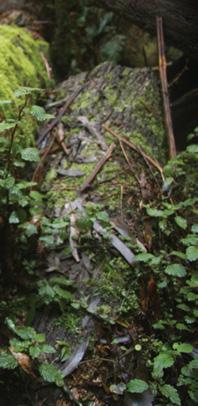
O. Eugene Maughan, 1977–84
ASSISTANT UNIT LEADERS
Bradford E. Brown, 1966–70
Austin K. Andrews, 1970–75
Michael D. Clady, 1976–81
Oklahoma Cooperative Fish and Wildlife Research Unit (combined 1984)


UNIT LEADERS
O. Eugene Maughan, 1984–87
Phillip J. Zwank, 1987–89
David M. Leslie, Jr., 1989–2016
James M. Long, 2019–present
ASSISTANT UNIT LEADERS
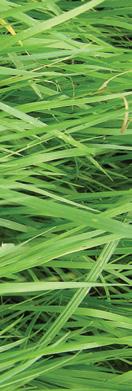
David M. Leslie, Jr., 1985–89
Alexander V. Zale, 1985–93
William L. Fisher, 1991–2008
Dana L. Winkelman, 1998–2003
James M. Long, 2009–19
Shannon K. Brewer, 2010–20
Robert C. Lonsinger, 2020–present
Lindsey A. Bruckerhoff, 2021–present








































































































































































































